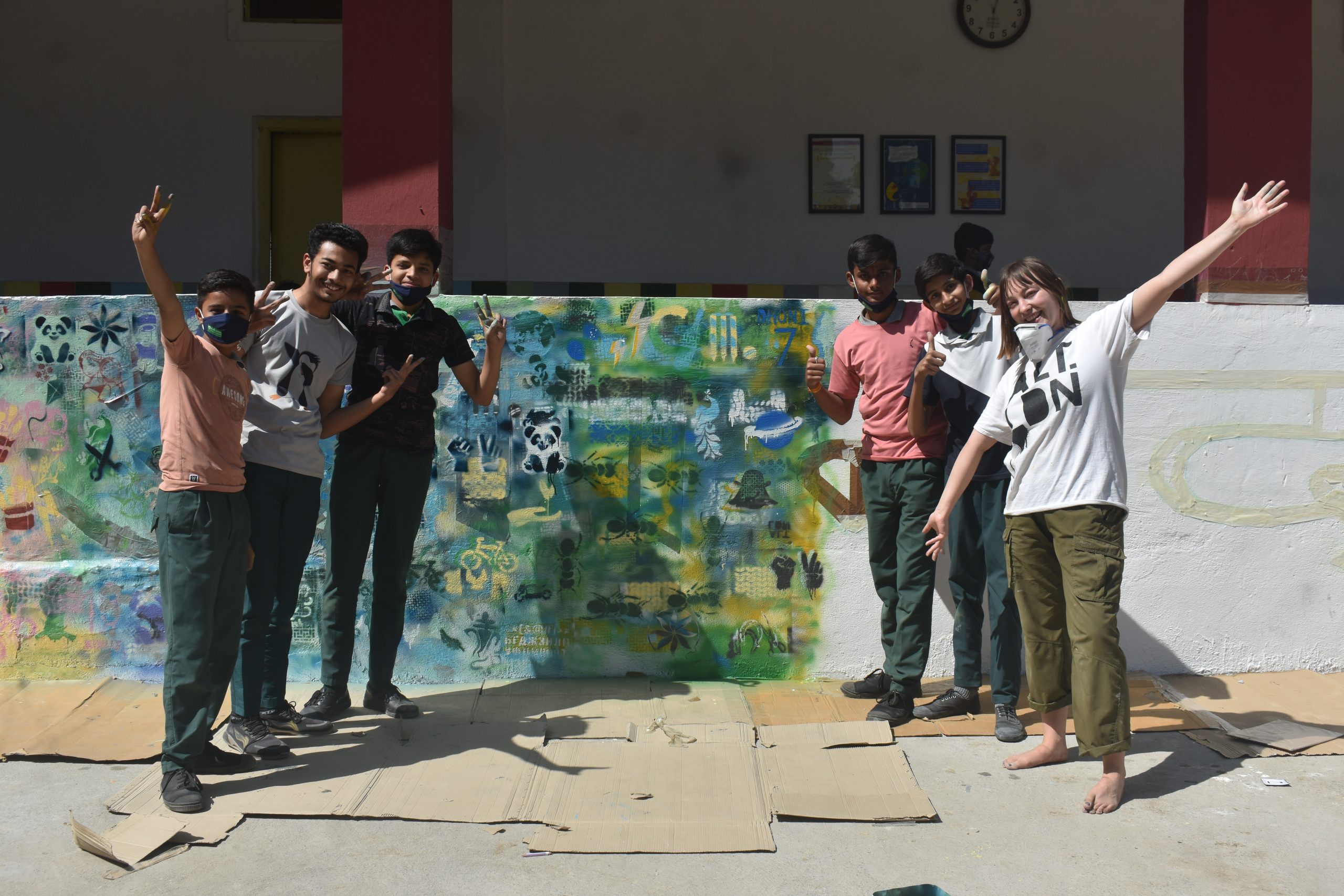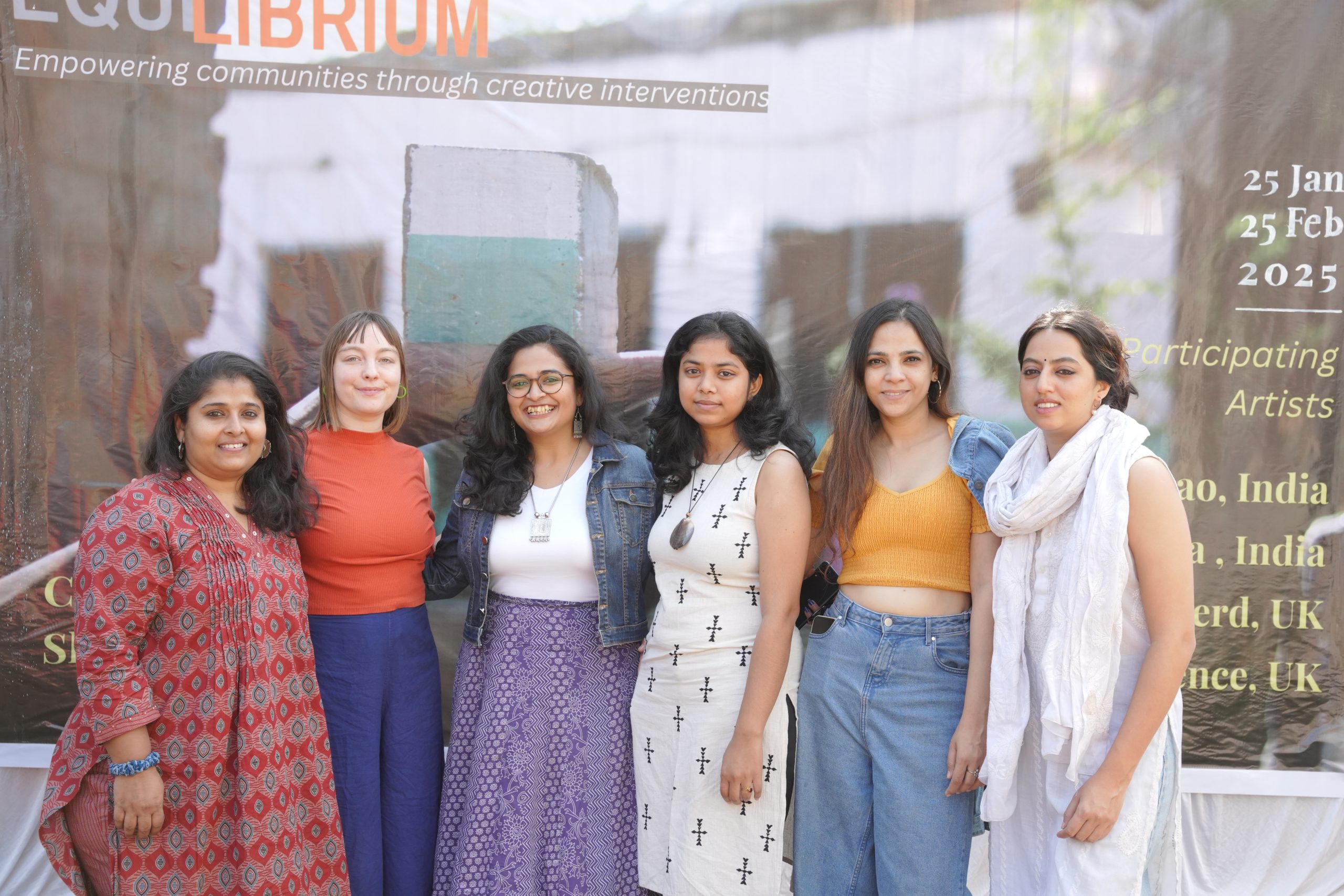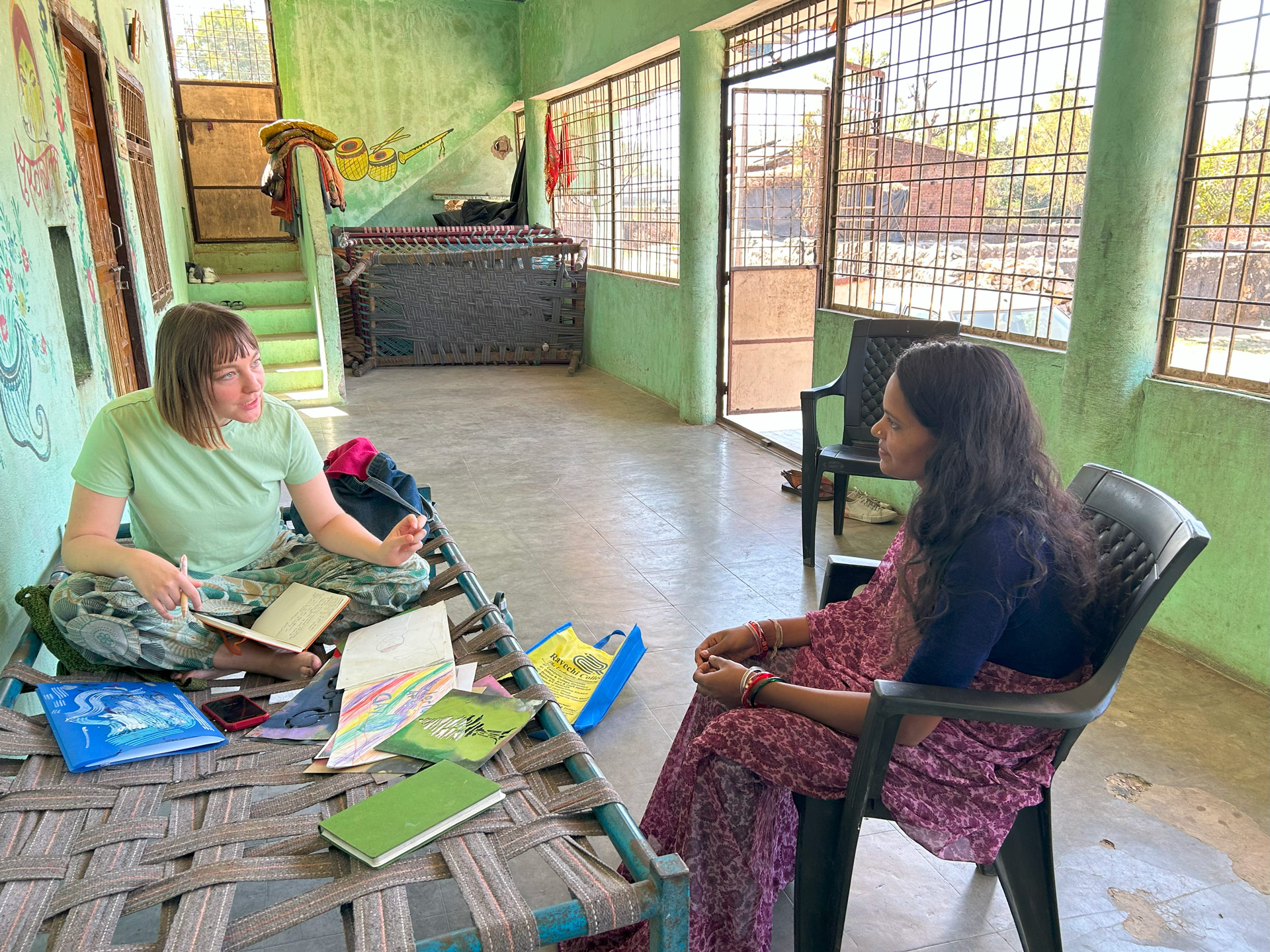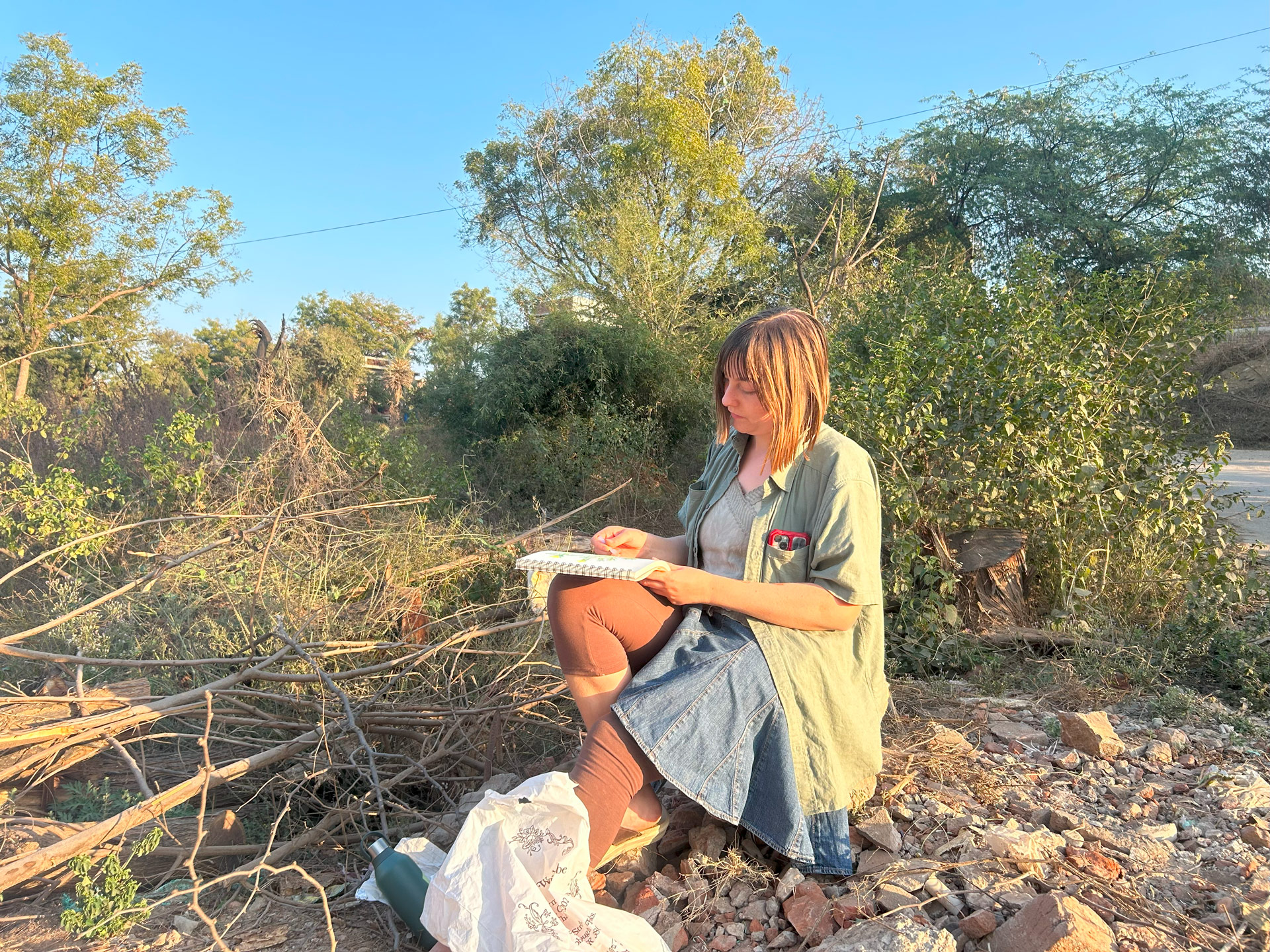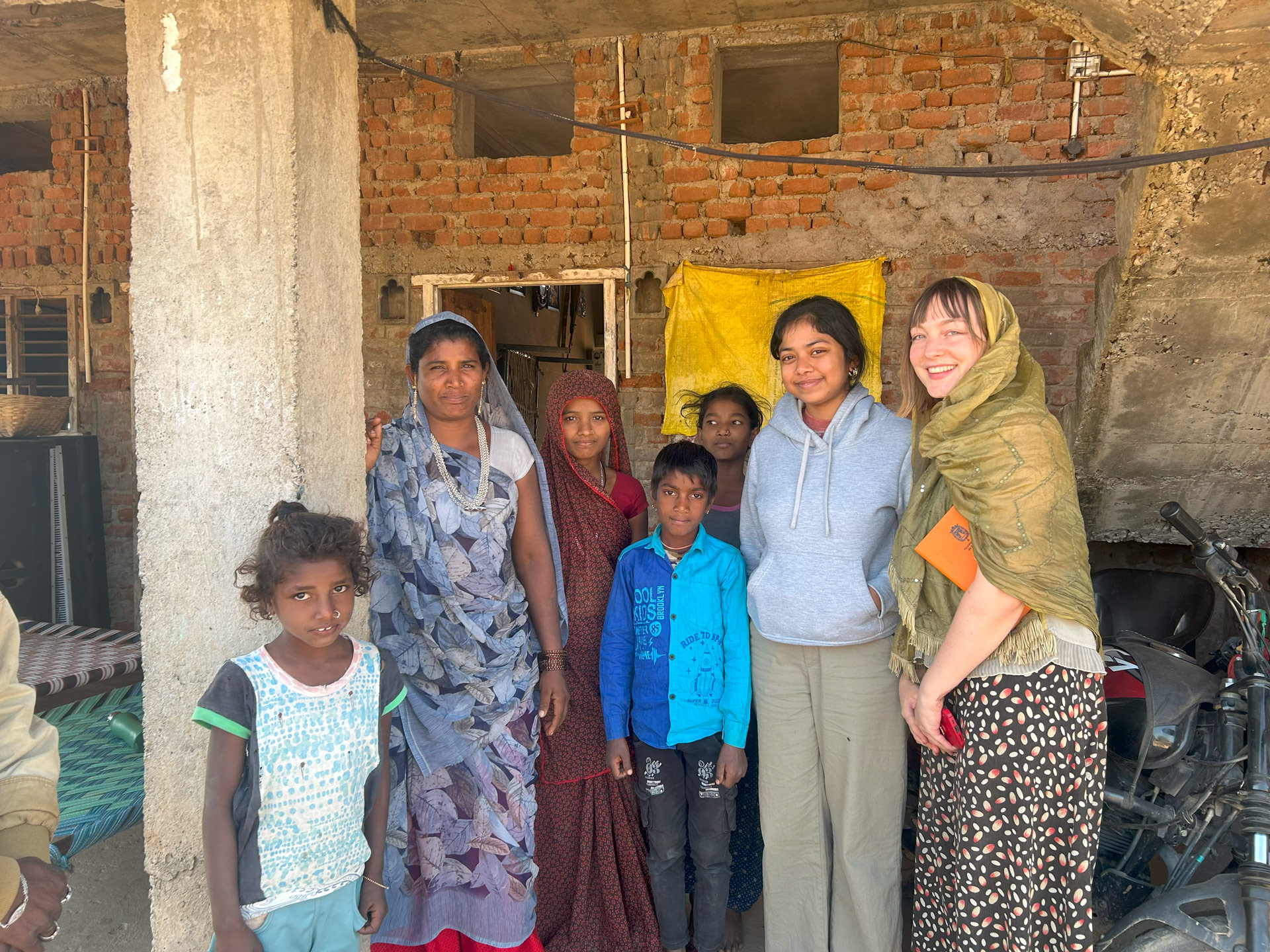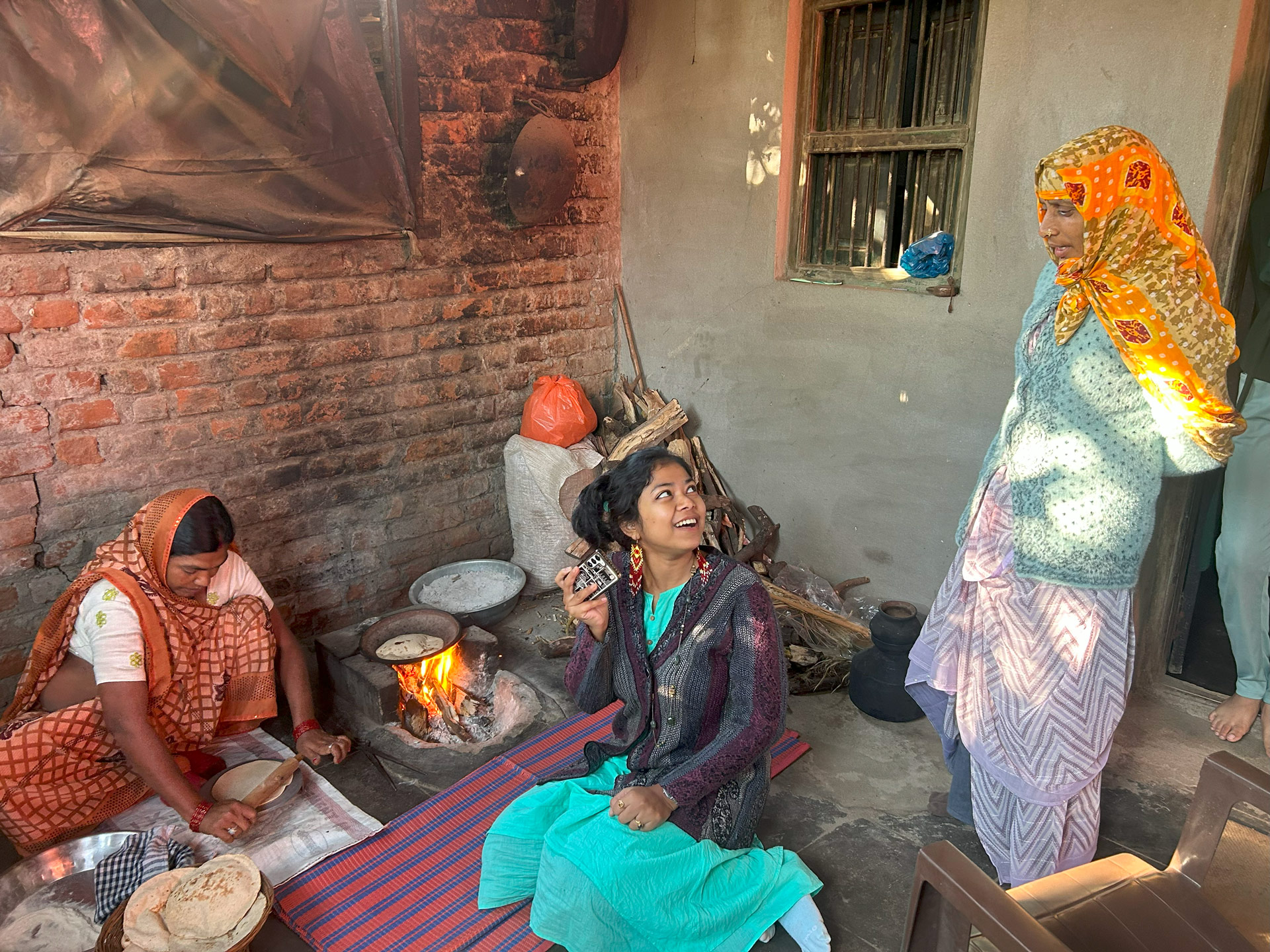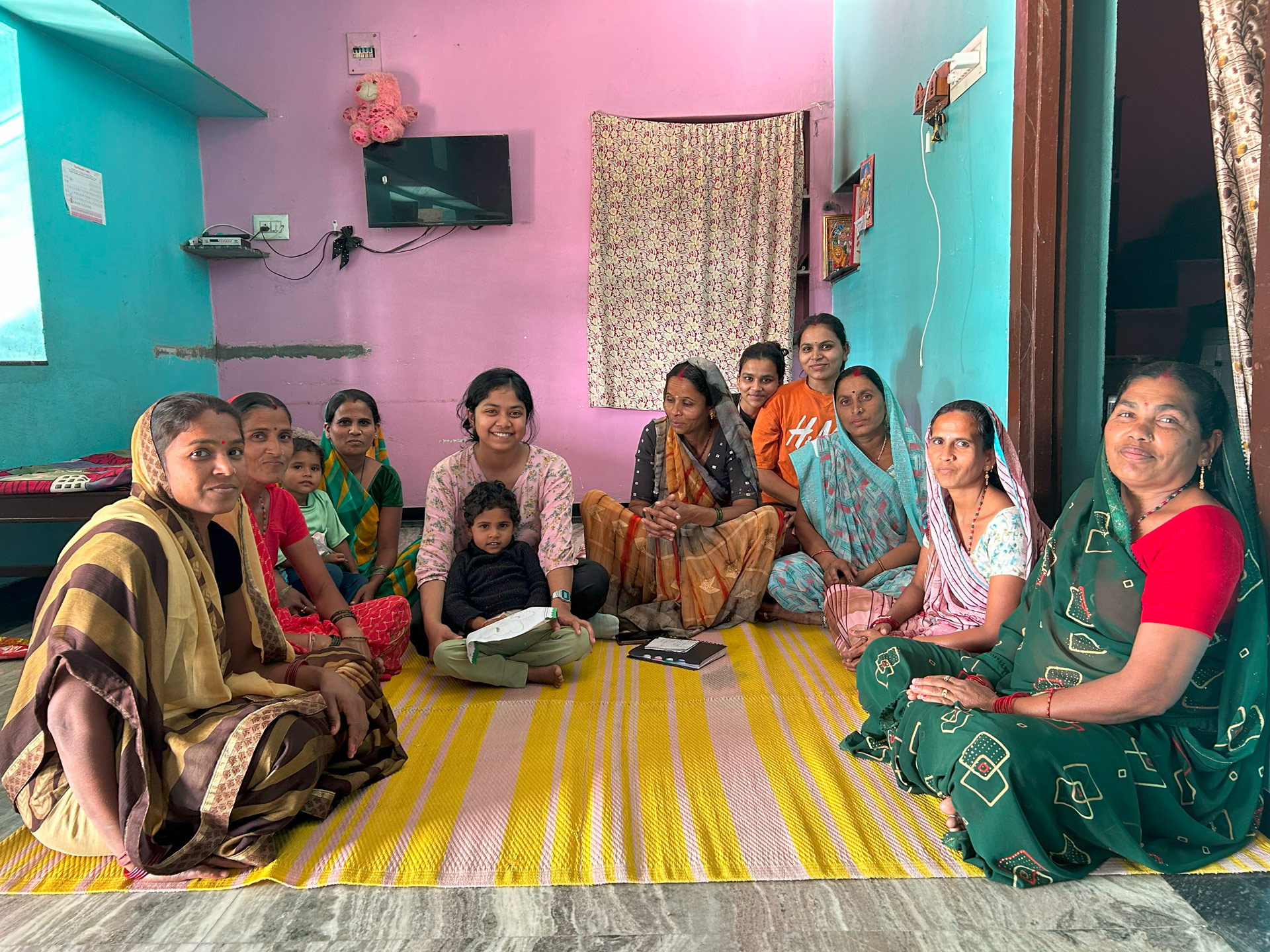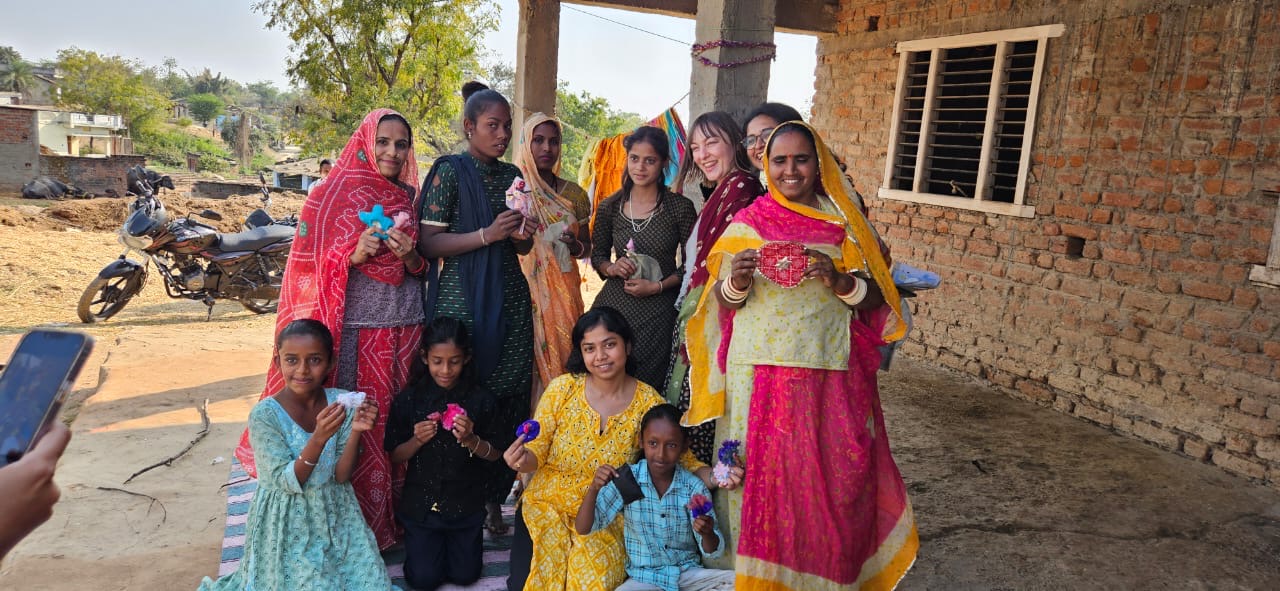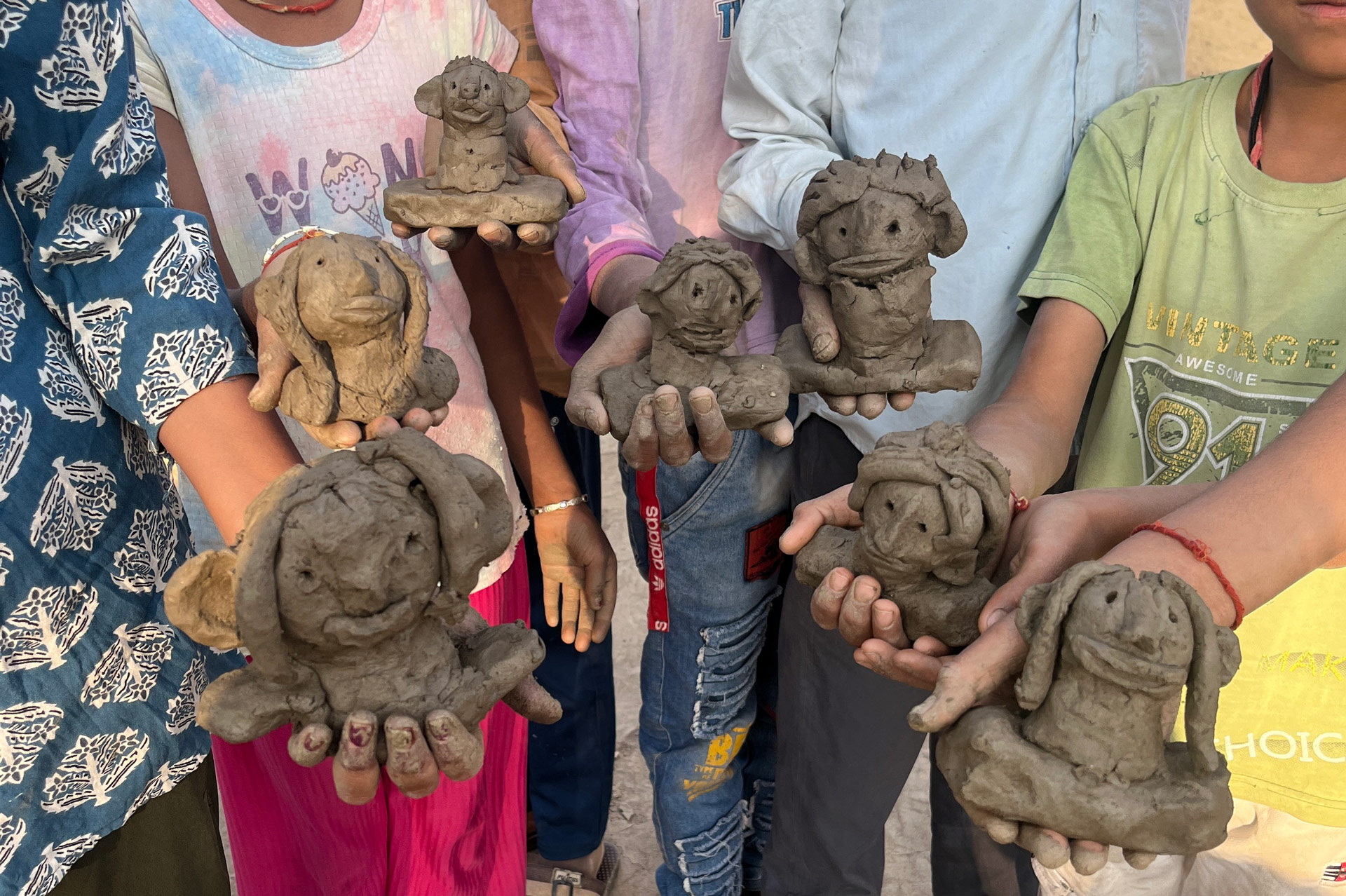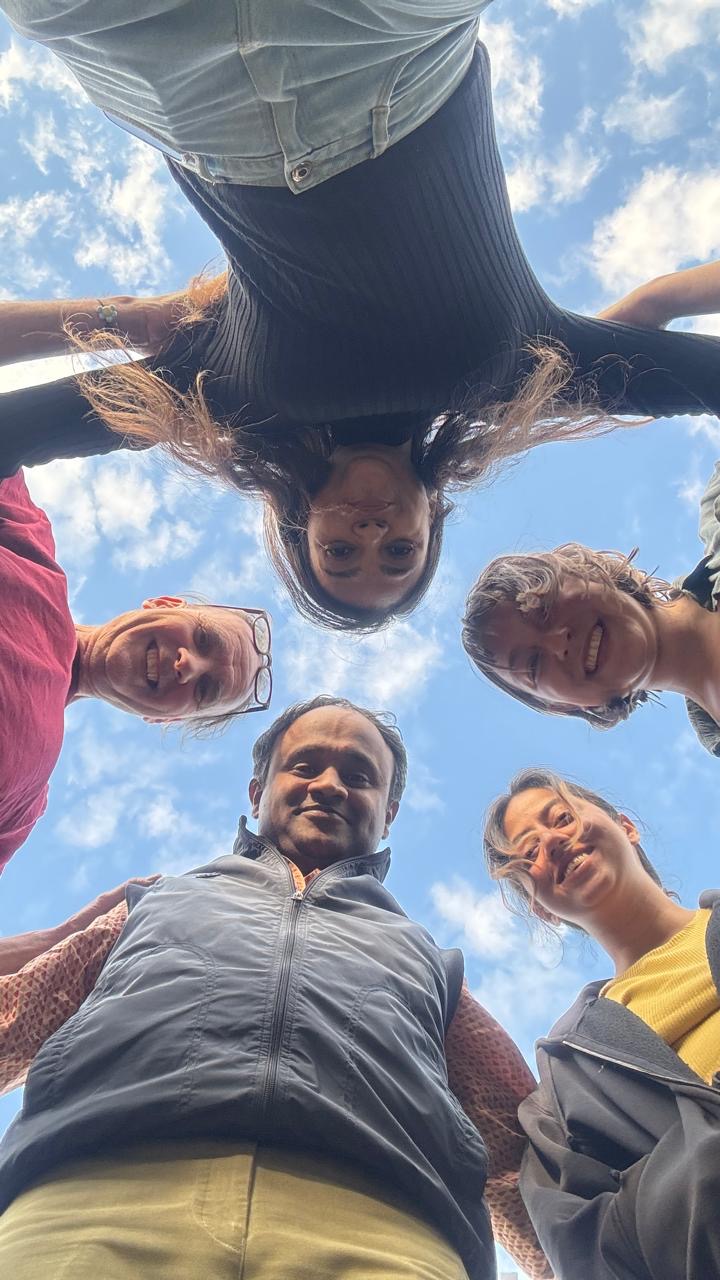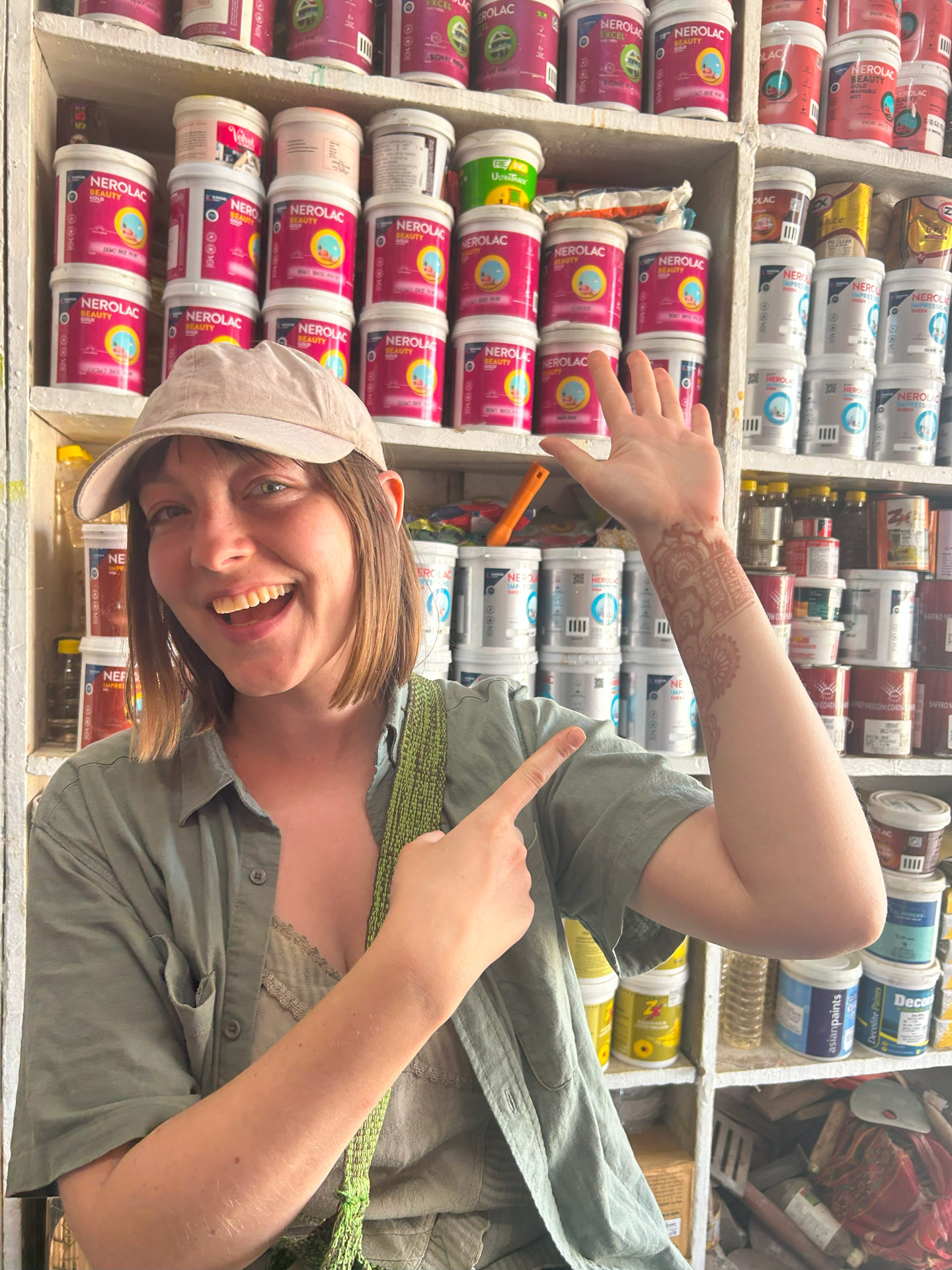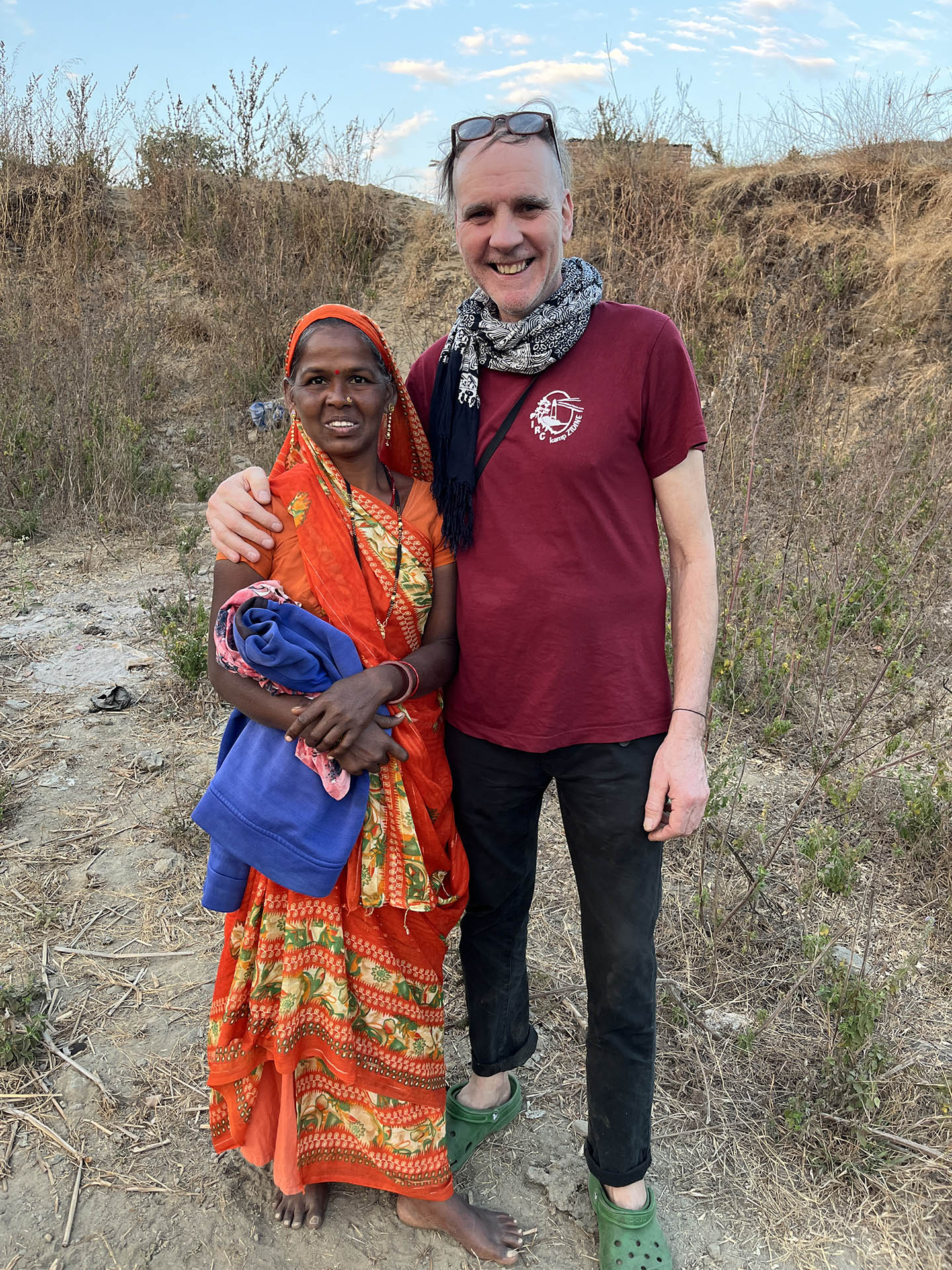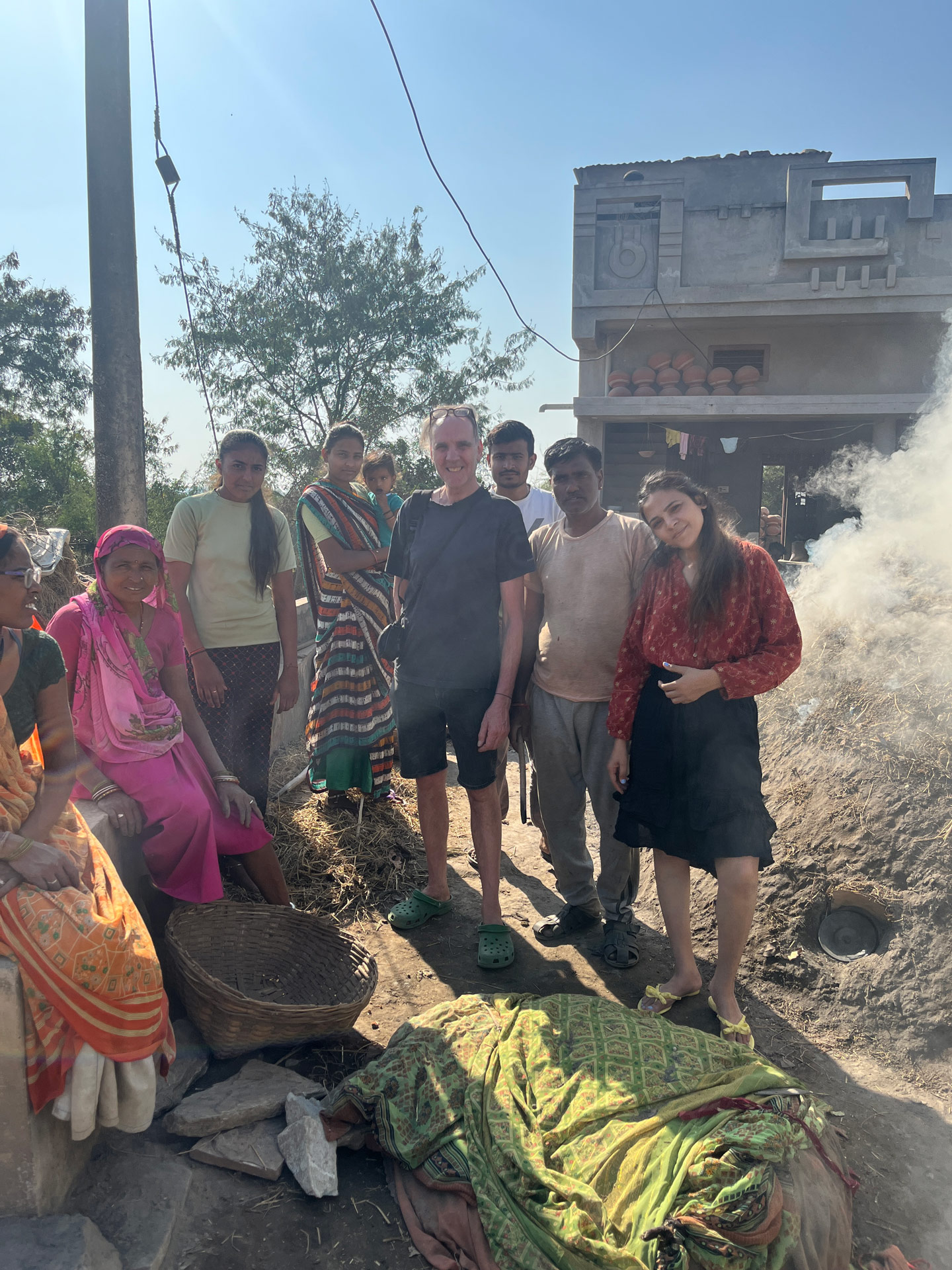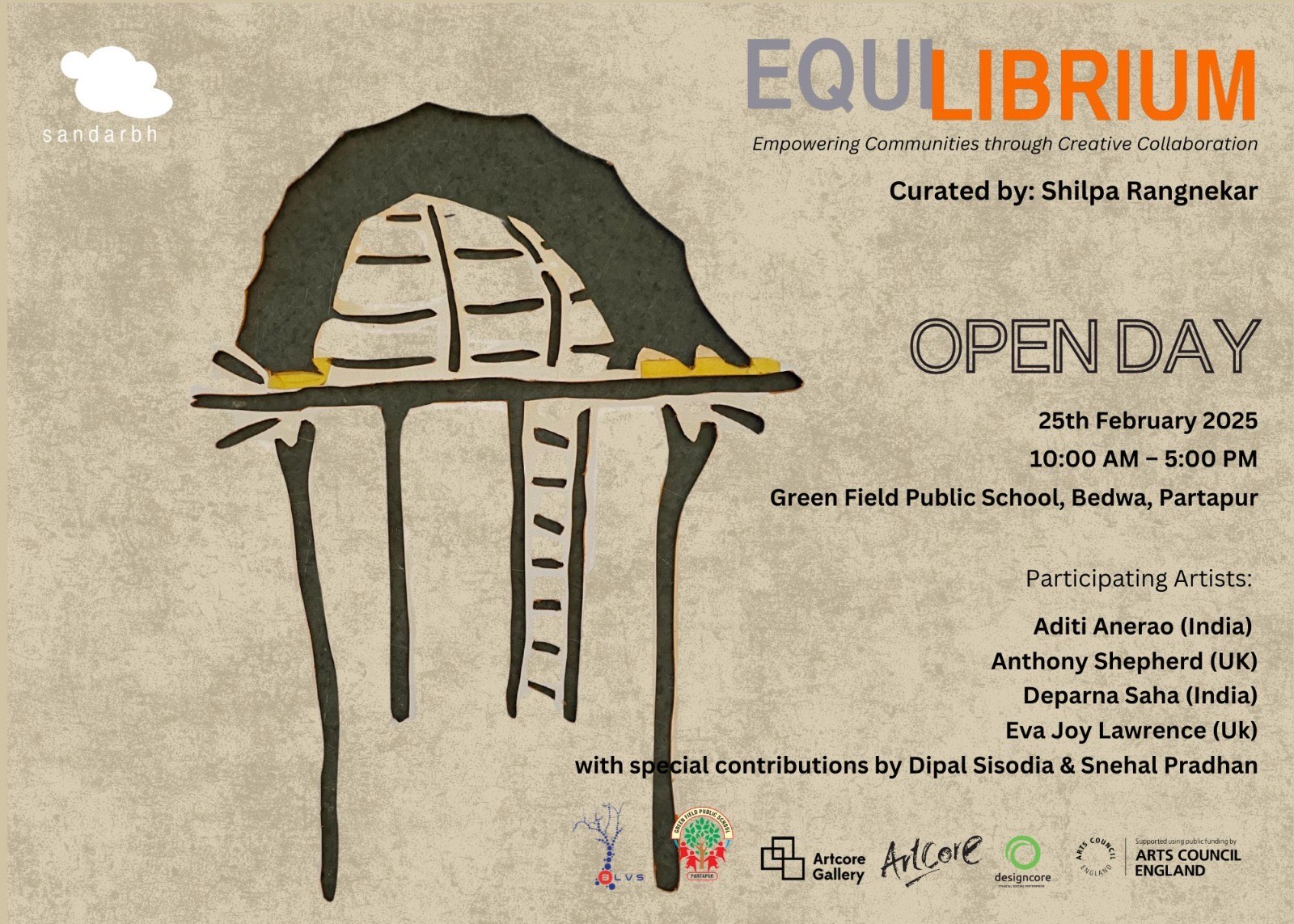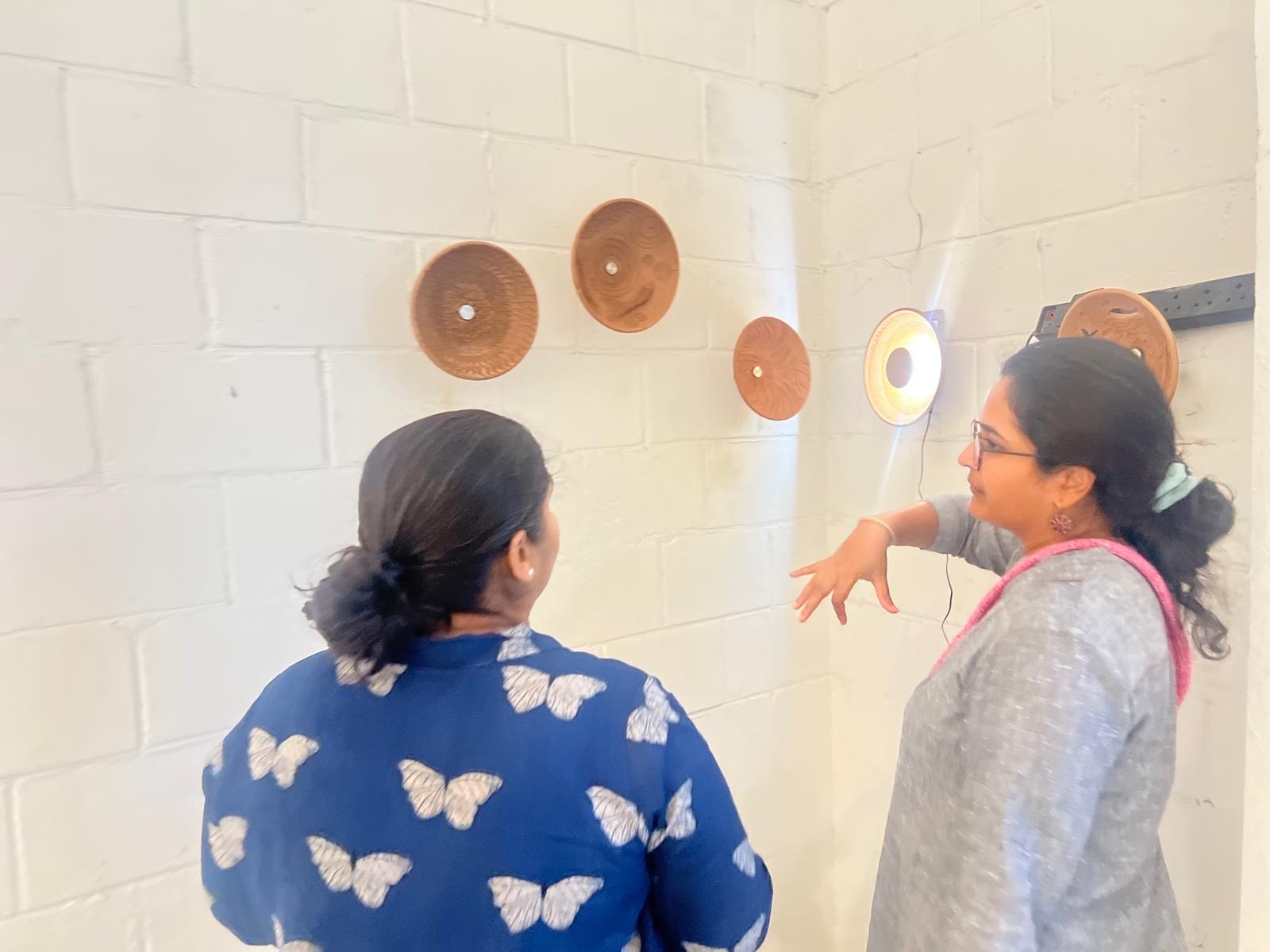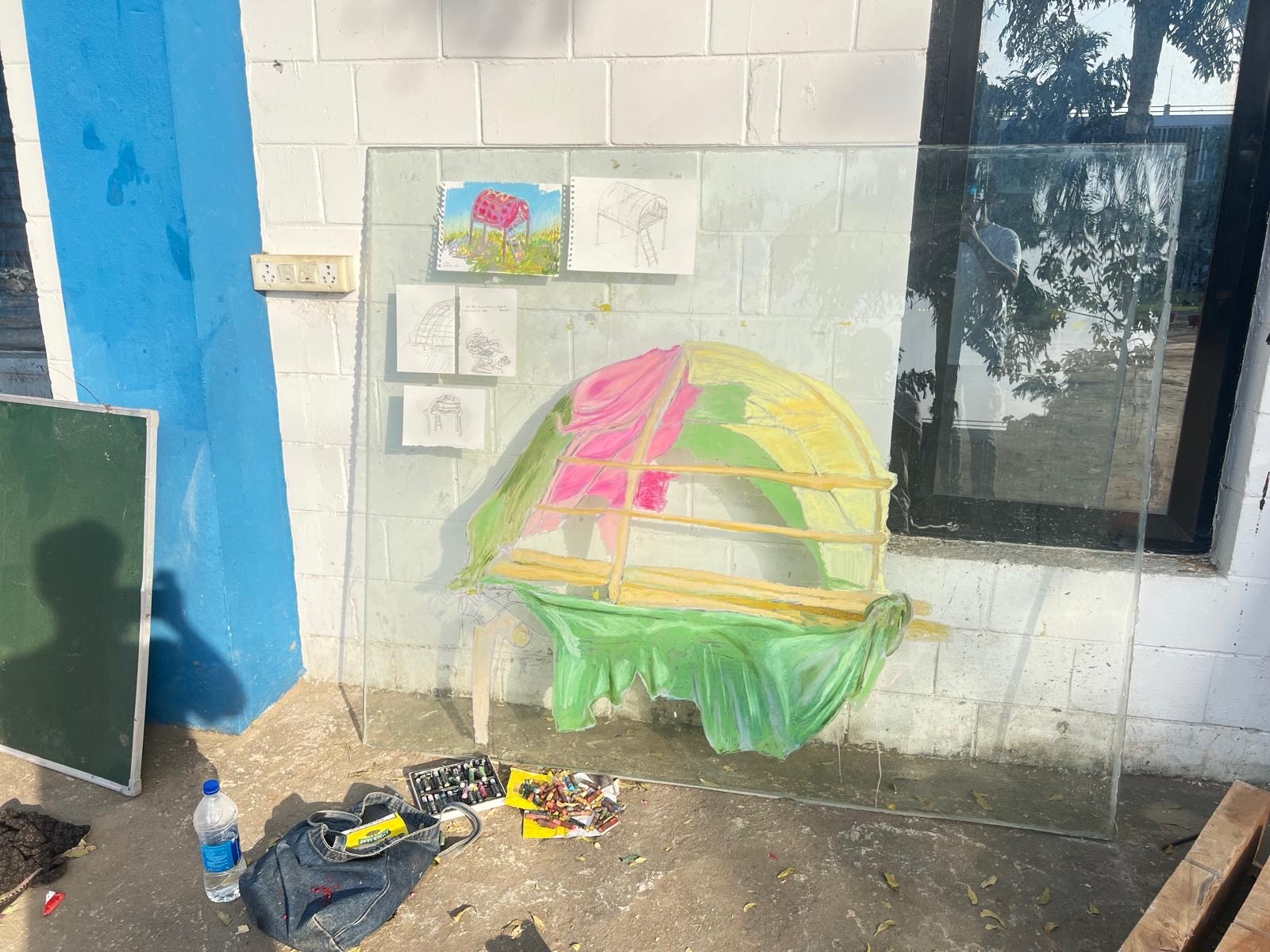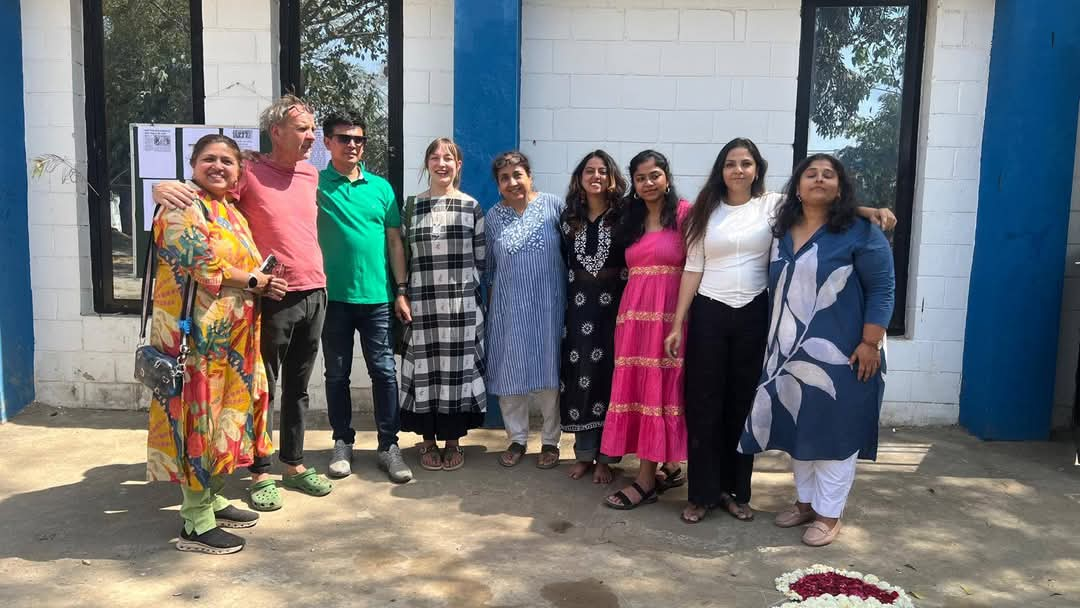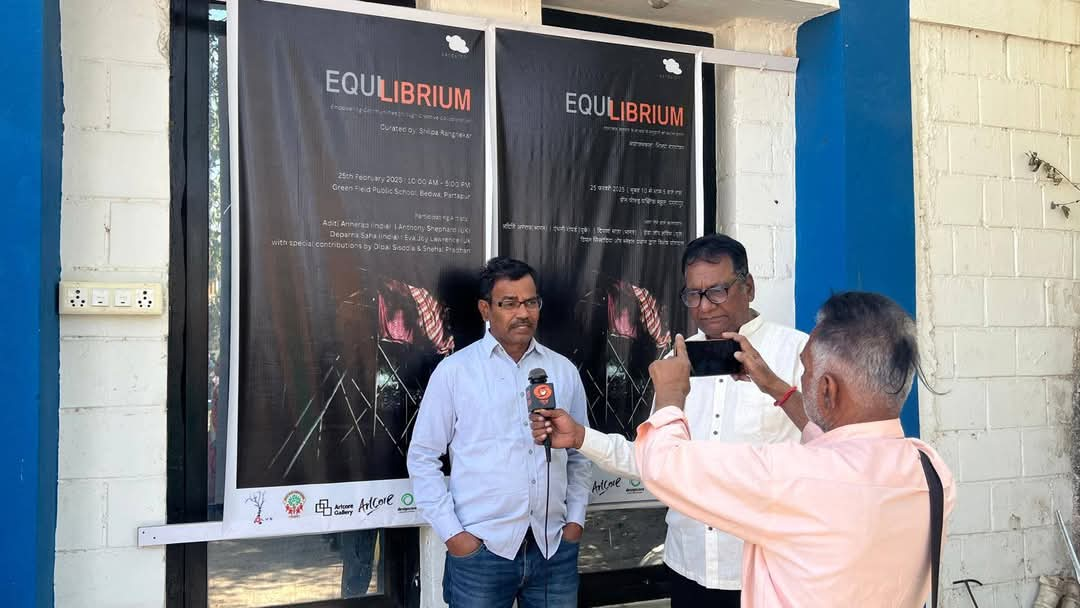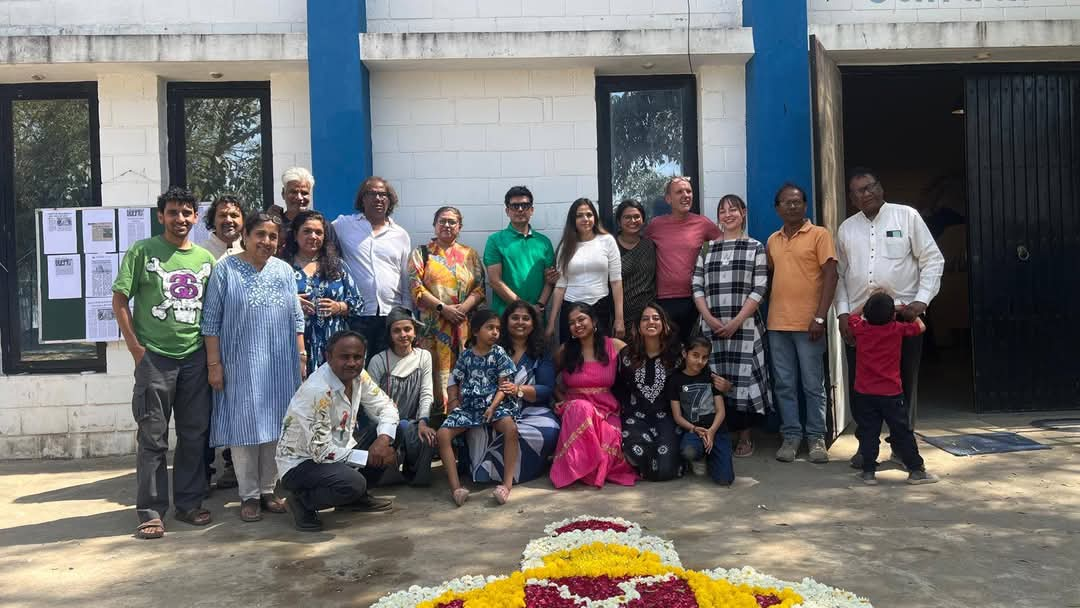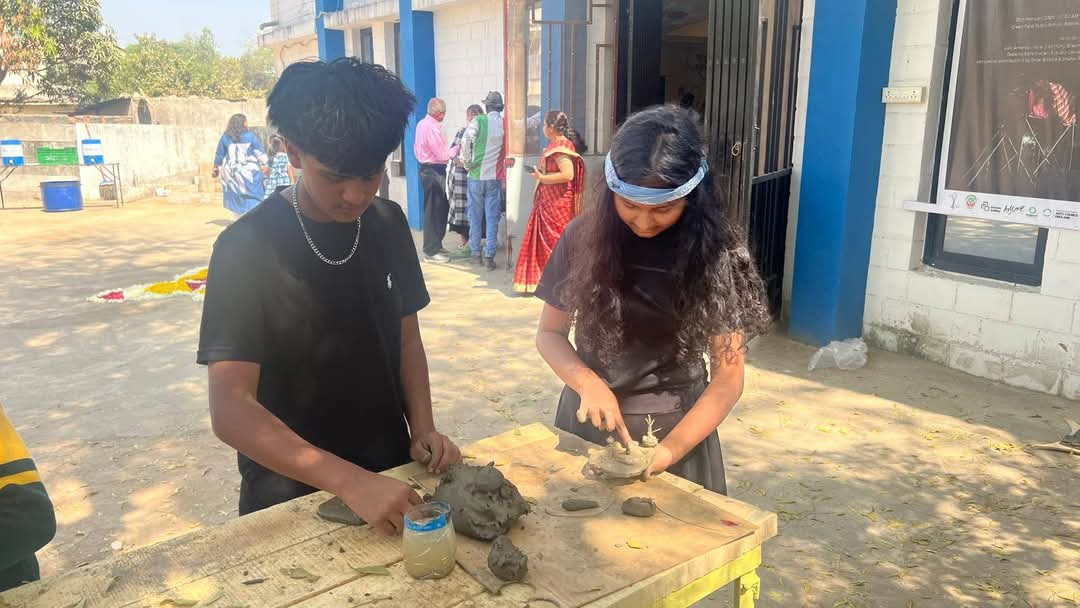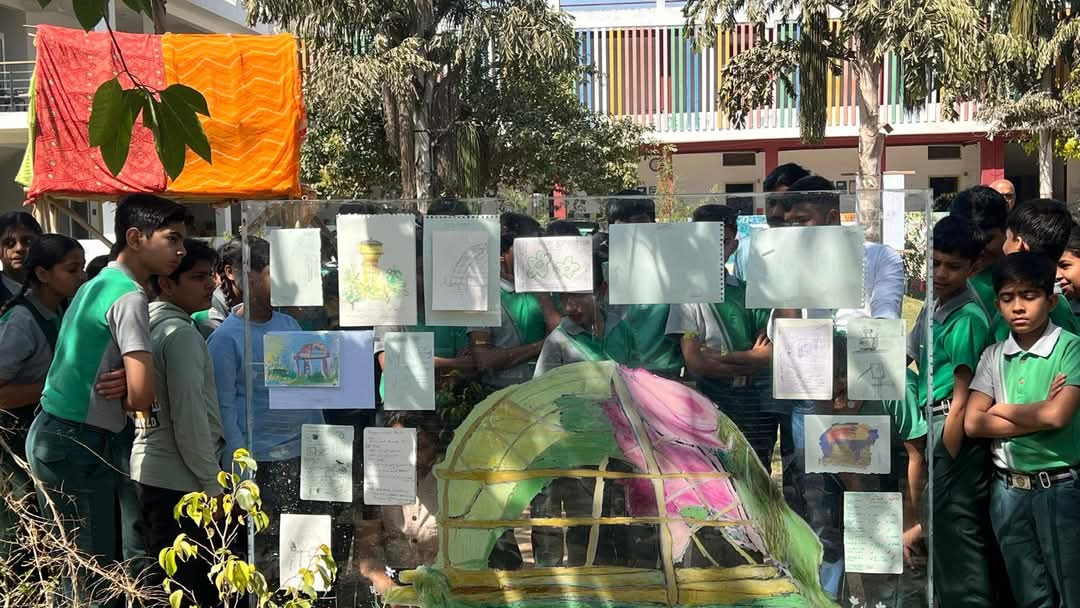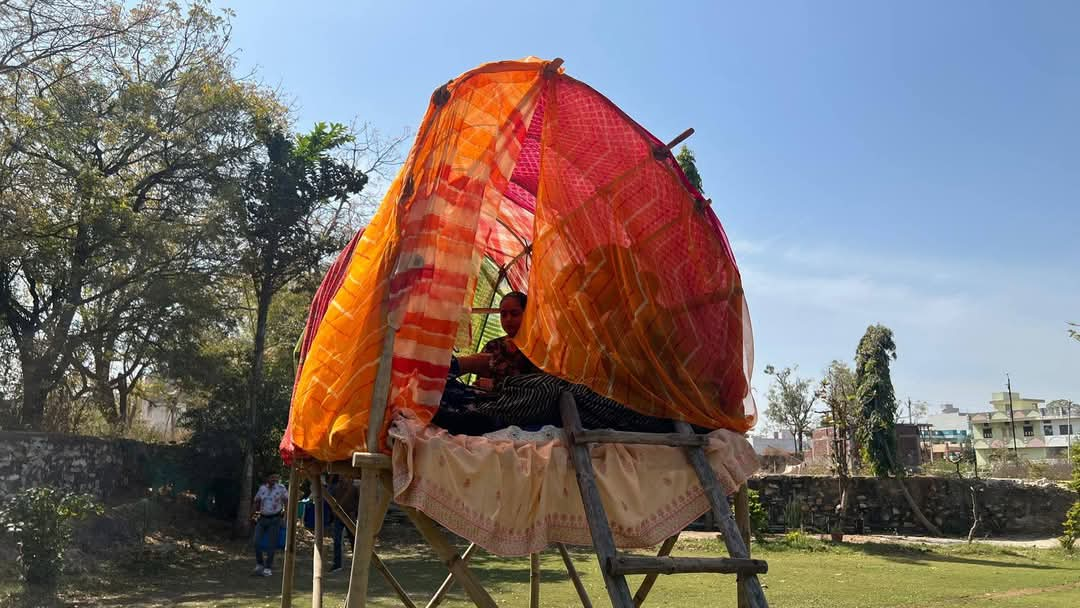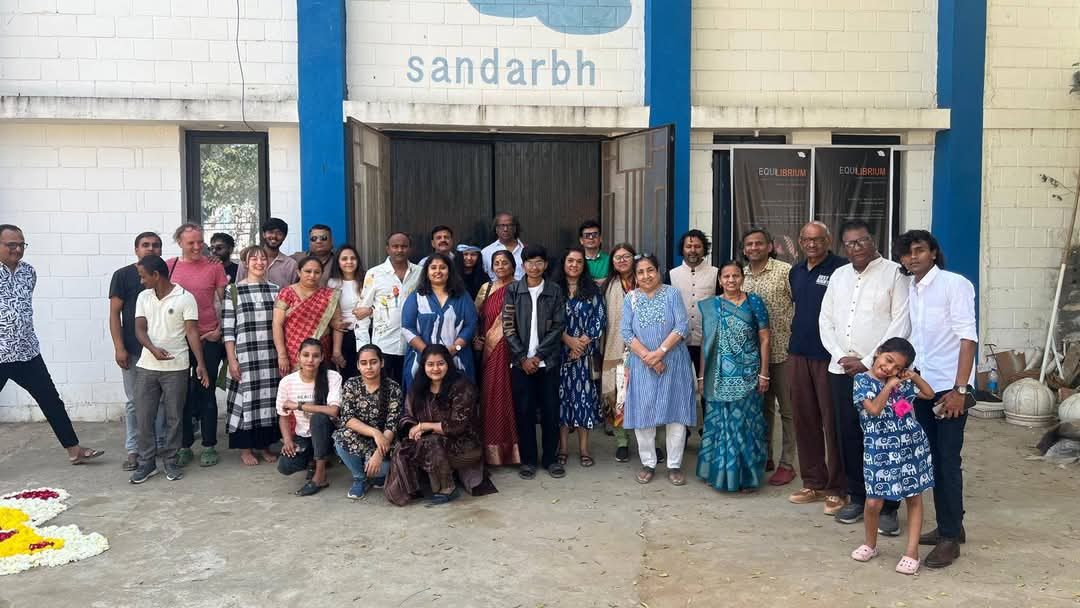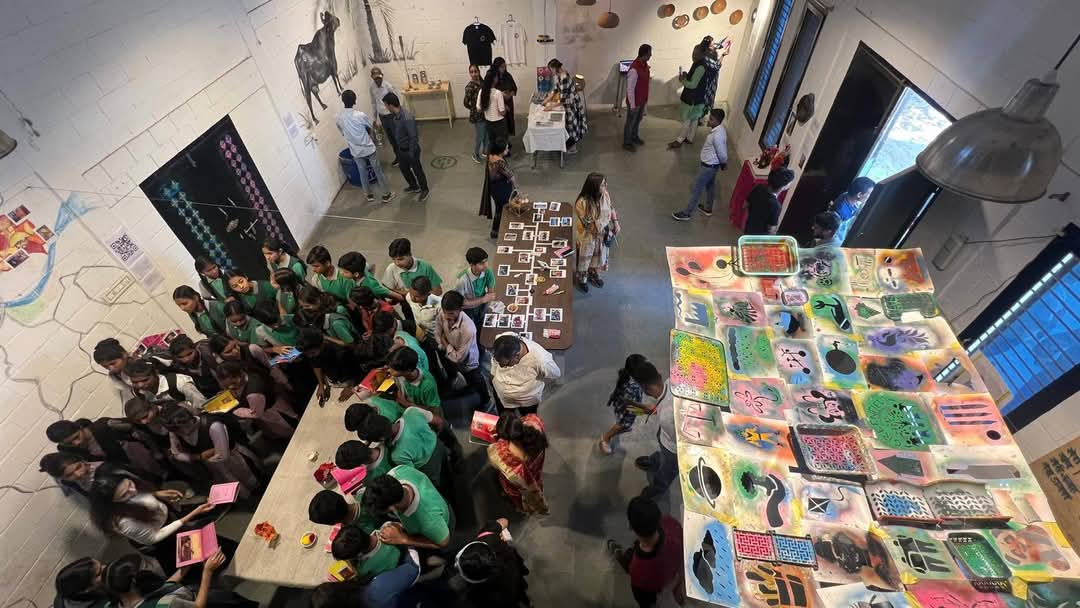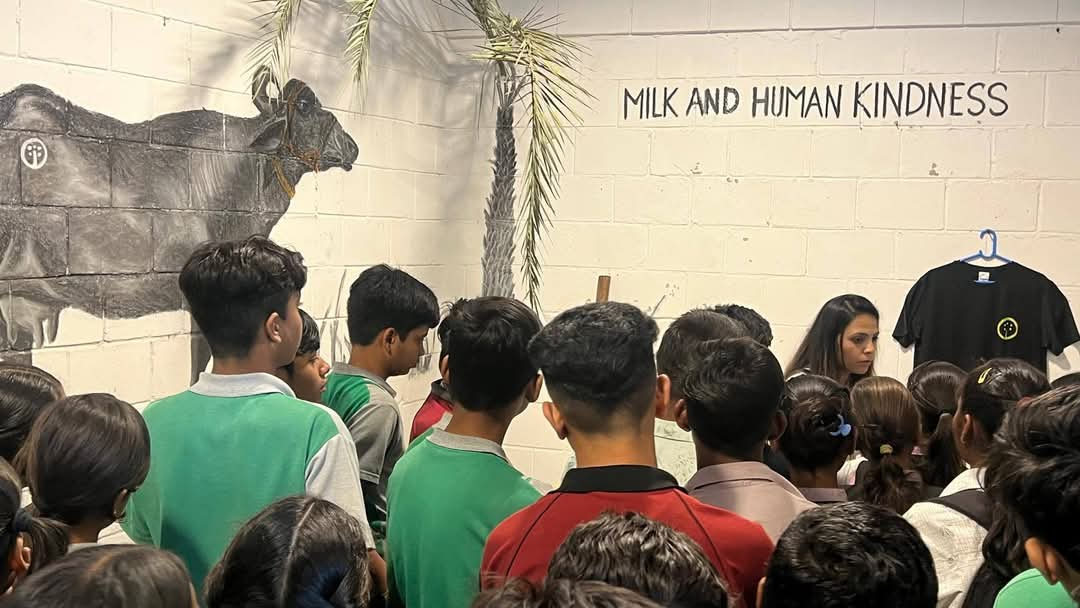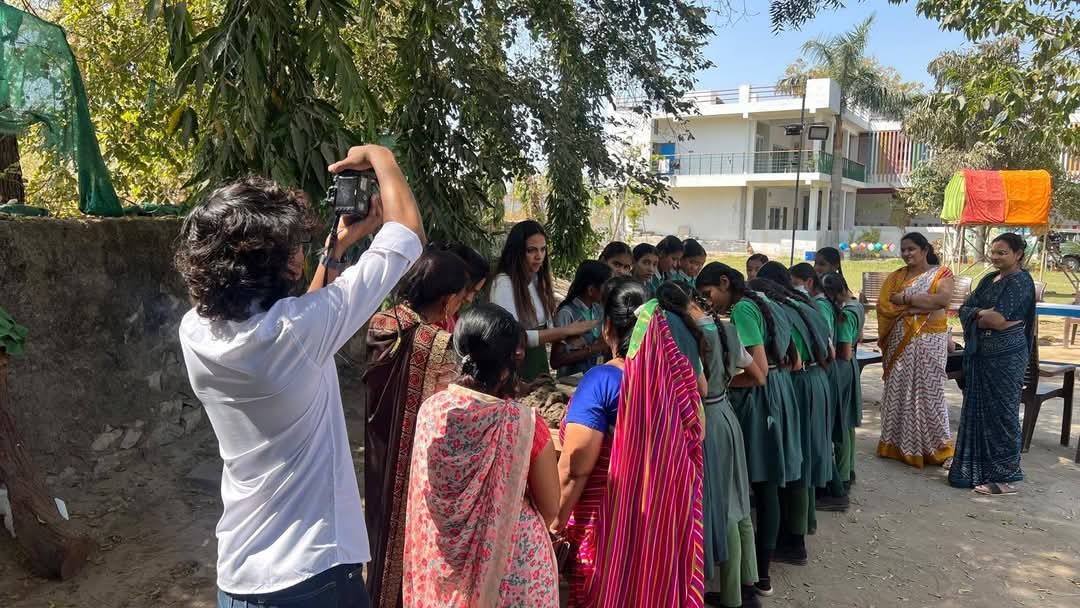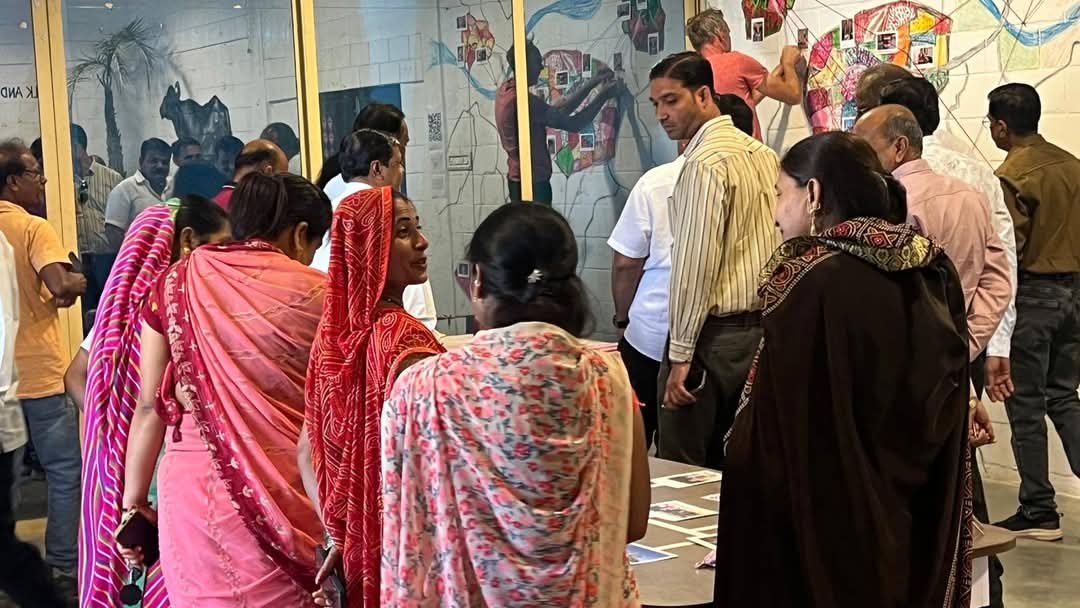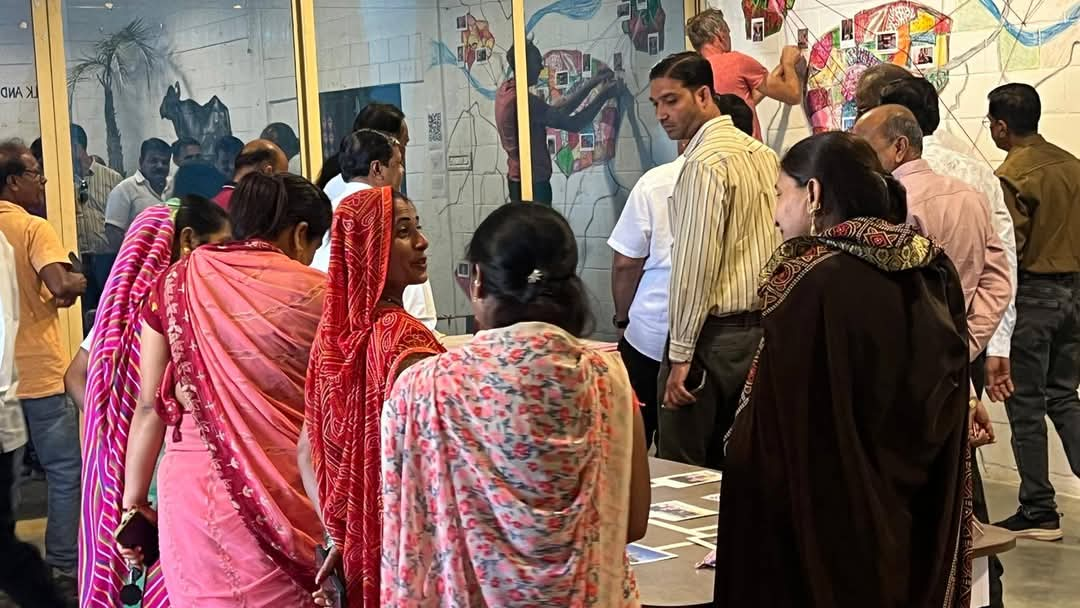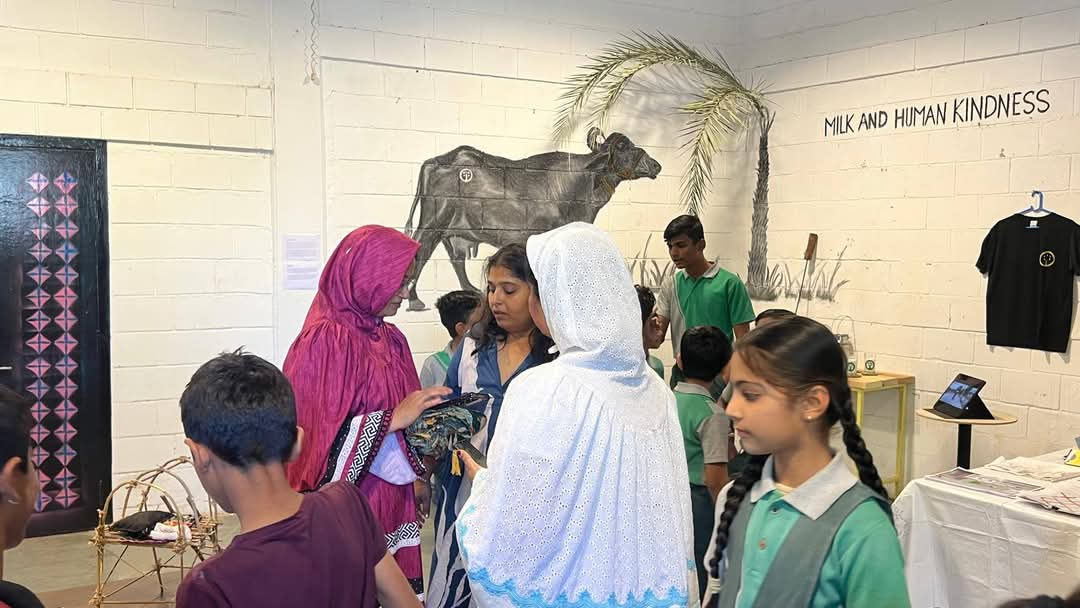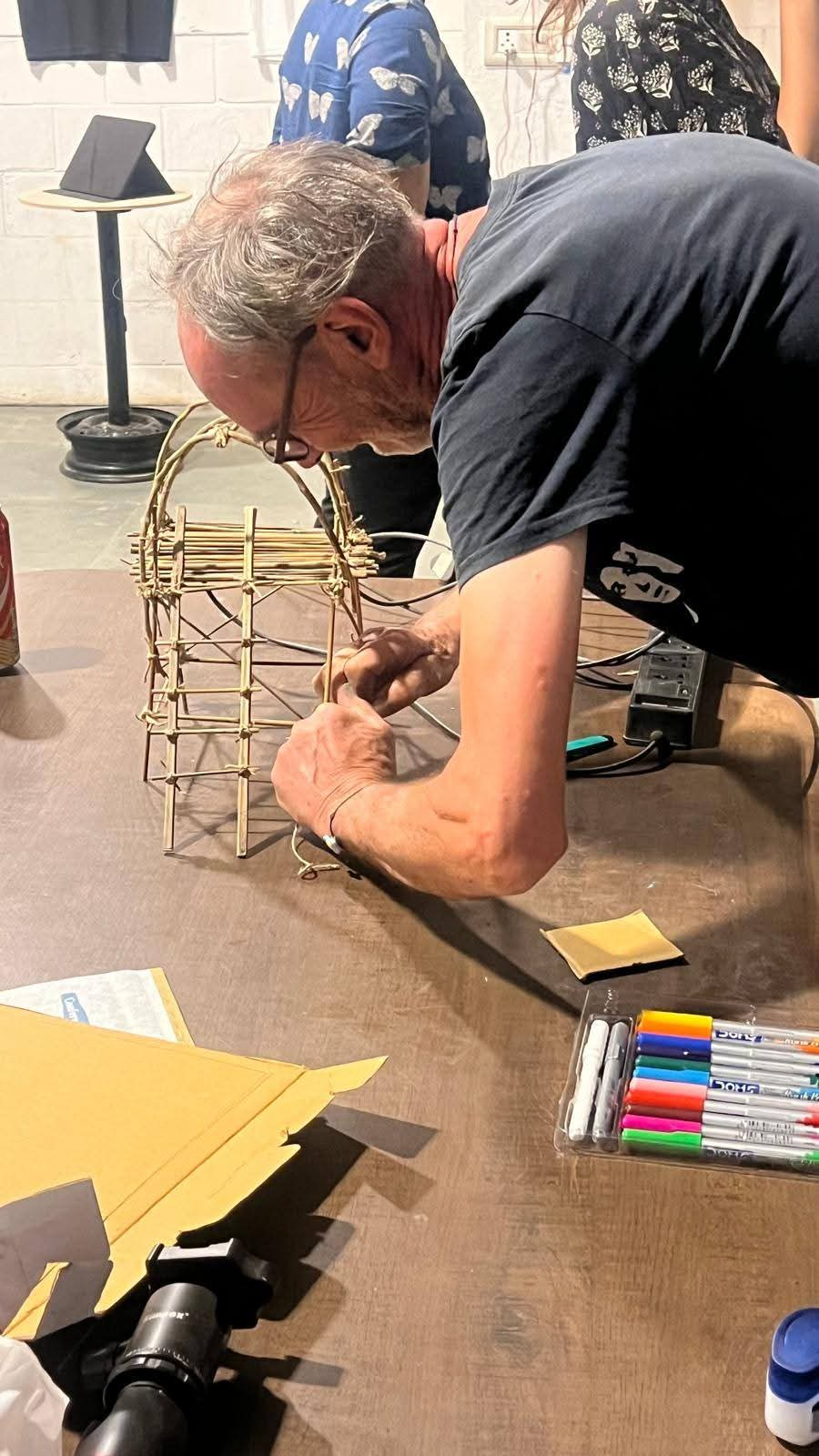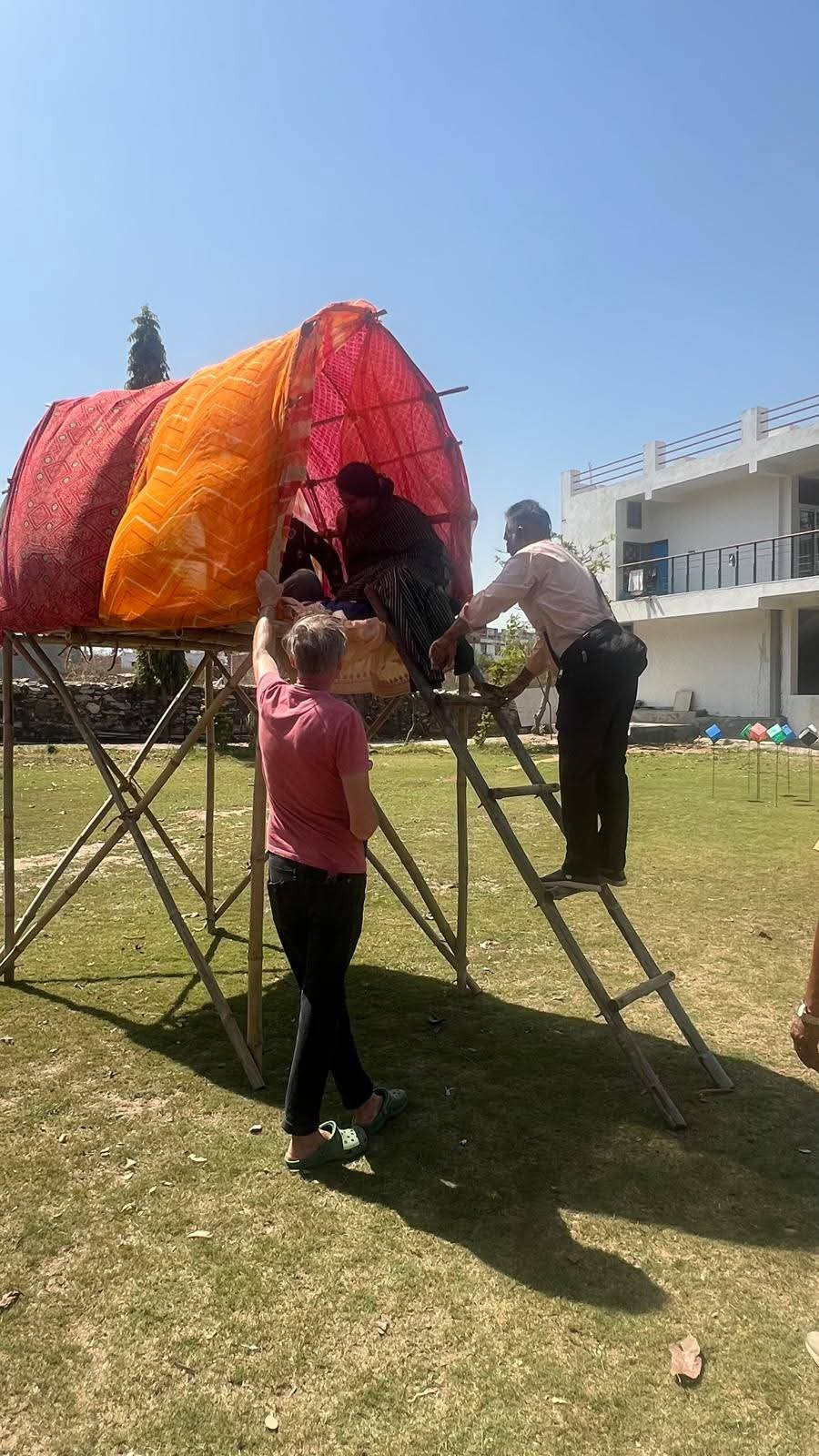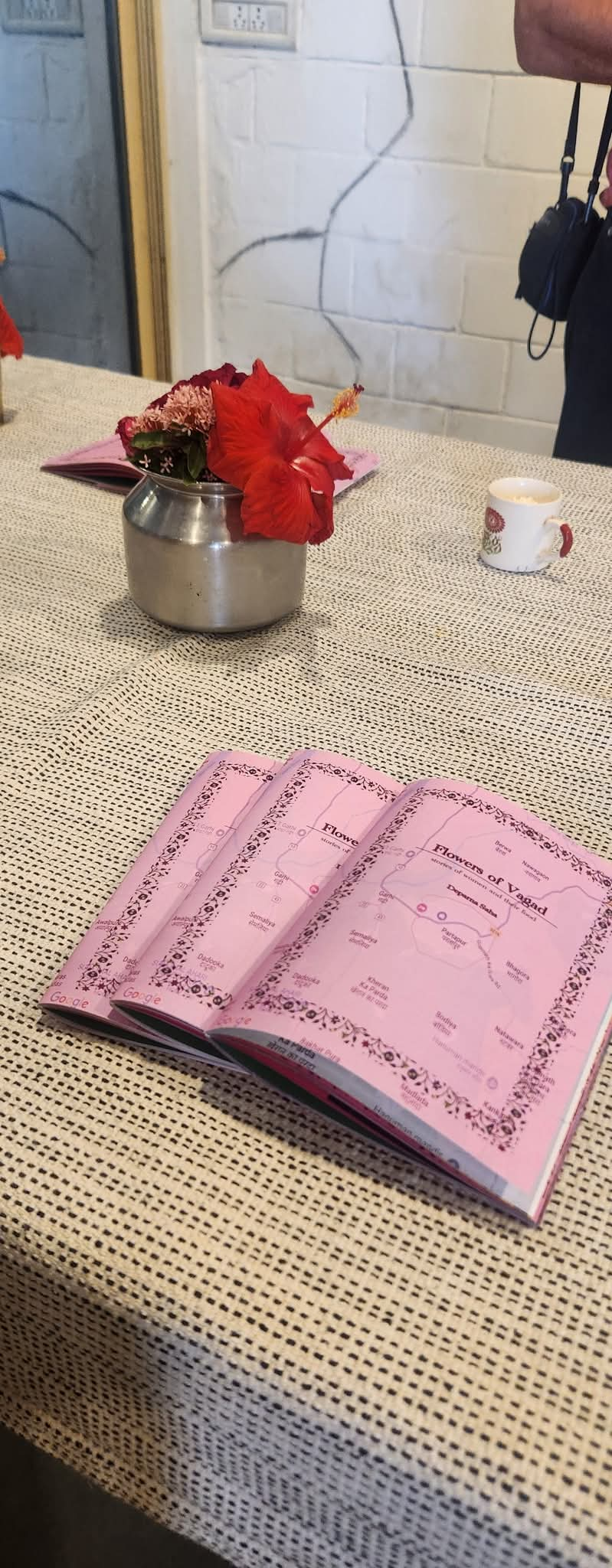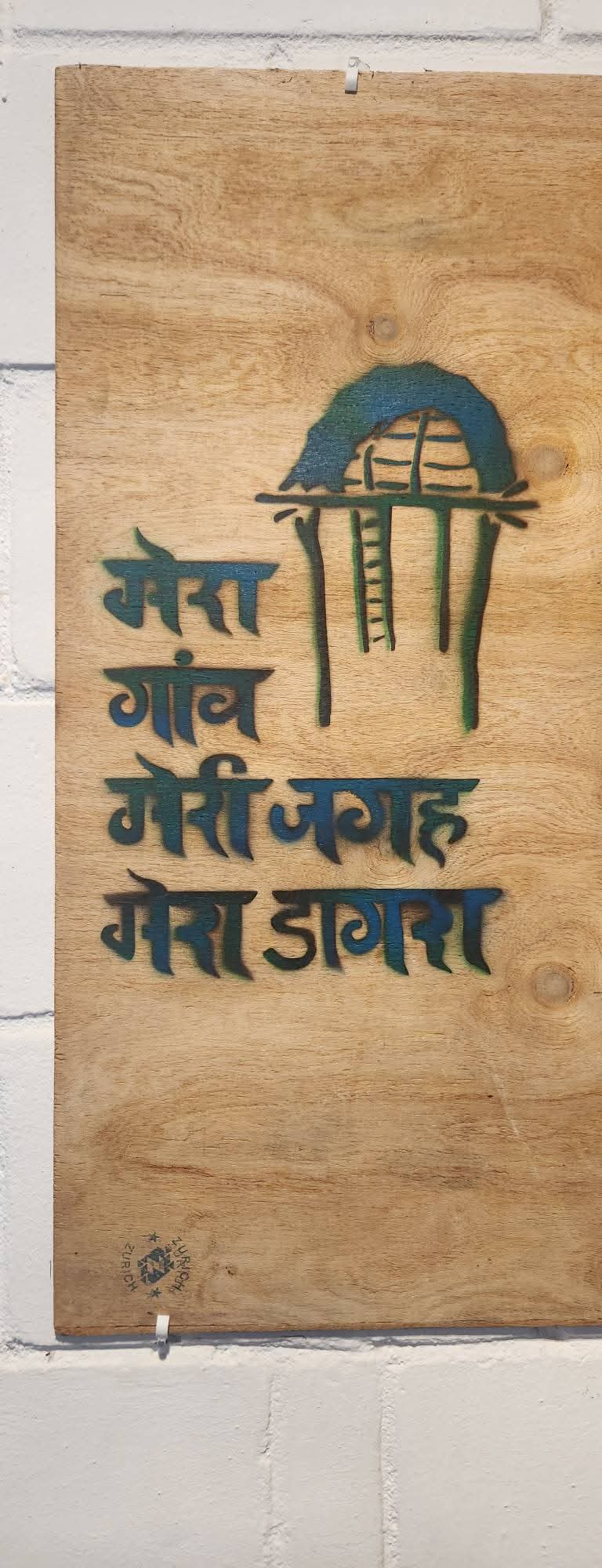SEARCH EVENT
Equilibrium – Artcore’s International Residency
Artcore’s first international residency program of the year, Equilibrium: Art and Everyday Life, took place in Partapur, Rajasthan, India, in collaboration with Sandarbh, an India-based arts organization. Curated by Shilpa Rangnekar, this third edition of Project Equilibrium marked Artcore’s 30th anniversary, bringing together a diverse group of talented artists from the UK and India to explore the intersections of art, community, and everyday life.
The residency spanned four weeks, during which the artists immersed themselves in the local environment, collaborating closely with women’s independent self-help groups in the community. Through active participation and dialogue, they co-created new works and artistic processes that reflected shared experiences and cultural exchange.
Together, the artists and community members brainstormed and produced unique artworks that embodied a fusion of ideas, creativity, and skills. This partnership fostered meaningful cross-border connections, empowering both the artists and the community to reflect on their environments and the ways in which art can shape and respond to everyday life.
The Selected Artists:
Anthony Shepherd:
Co-founder and Director of the Wireworks Project in Ambergate, Derbyshire, UK, Anthony is a conceptual visual artist known for his site-specific installations and interventions. His work often incorporates natural and recycled materials, connecting deeply with the surrounding environment.

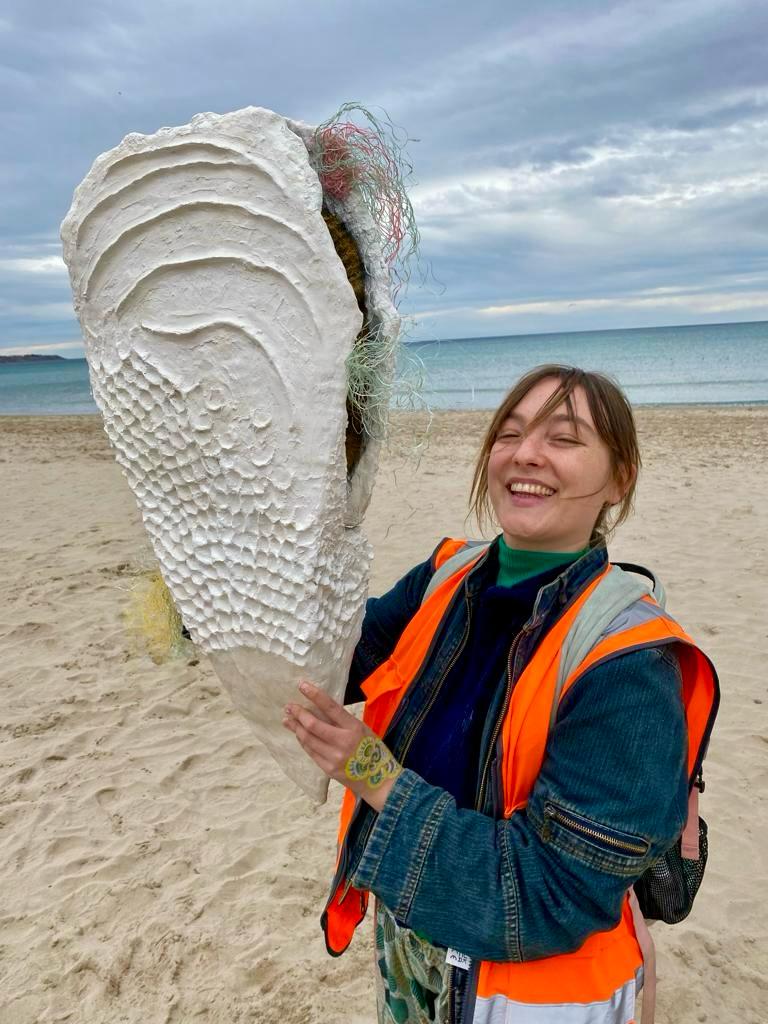
Eva Joy Lawrence:
Eva is a multidisciplinary artivist whose ideas circulate around protest, connection, apocalyptic possibilities, climate change and utopia. She often takes an anarchic view to traditional spaces for art and prefers using public interventions and community collaborations to spark energy for change.
Eva graduated with a BA in Fine Art and Art History from Manchester School of Art and The University of Barcelona. She is currently based in London and has always lived in cities; the grit and absurdity of which are often captured in her works. Her practice sits on a line between humour and horror, humour being a useful tool with which to approach hyperobjects such as the climate crisis and neoliberal global capitalism. She regularly uses recycled materials and objects collected from the streets to make work as an act of community cleaning and through which she enjoys subverting the elitism which surrounds the art world.
Aditi Anerao:
Aditi Anerao is an architect, designer, photographer, and artist with a deep love for nature. Known for her playful side skills and occasional sarcasm, she finds inspiration in the stories around her, capturing and learning from them through her creative practice.

Deparna Saha:
Deparna Saha is a multidisciplinary artist born in 1998, in Nabadwip, West Bengal. She completed her Bachelor of Fine Arts in Painting from The Indian College of Art and Draftsmanship, Rabindra Bharati University, Kolkata in 2021, before pursuing Fine Arts from Sarojini Naidu School of Arts and Communication, University of Hyderabad in 2023. Deparna’s work was exhibited at the annual Birla Academy of Art & Culture exhibition in 2021 and the Emerging Palettes edition 14 exhibition at Srishti Art Gallery in 2024. She recently completed her residency program at 1 Shanti Road NEXT-STEP Residency, 2024. Deparna currently lives and works in Nabadwip, West Bengal.
She explores problems of climate change, coexistence, identity, cultural heritage through the relational aesthetics between food and contemporary society. Deparna draws inspiration from her childhood experiences and interconnected relationship between nature and culture instilled by the women in her family. Her interest in feminine knowledge of sustainability is reflected in her material selection such as leaves, twigs, natural dye, natural ink, and stitching from day-to-day life. Saha’s work questions the lack of feminine love, care, and apathy in the relationship with “others”.
Open Studio Day :
The partnership between Artcore and Sandarbh in Rajasthan, India, created a truly remarkable site-specific artistic experience in Partapur, bringing together two British artists and two Indian artists in a unique cross-cultural residency. Curated by Shilpa, the project Equilibrium fostered a deep engagement with the local community, particularly women and children, through a dynamic exploration of stories, customs, food, arts, and culture. This immersive collaboration not only enriched the artists’ perspectives but also led to an extraordinary, informative exhibition that resonated with audiences far and wide.
Set against the backdrop of Rajasthan’s rich cultural heritage, the artists engaged with the local landscape, traditions, and people to create works that reflected their shared and individual experiences. The project encouraged dialogue, experimentation, and artistic interventions within the community, making art an accessible and interactive experience. Women and children played a central role in shaping the narrative of Equilibrium, contributing their personal stories, traditional knowledge, and lived experiences to the creative process. Whether through storytelling, craft techniques, or culinary traditions, their input infused the project with authenticity and depth.
The culmination of this residency was a one-day exhibition that attracted a diverse audience, from local villagers to established artists, local school kids, curators, collectors, and cultural enthusiasts who travelled from near and far. The exhibition space became a meeting point for conversations about culture, identity, and social change, as visitors engaged with the artwork and the ideas behind them. The response was overwhelming, with many recognizing the importance of such collaborations in fostering cultural understanding and artistic growth.
Art, and artists, have the power to initiate dialogues on customs, politics, and other complex issues that are often difficult to address through conventional means. The Equilibrium project demonstrated this beautifully, using creative expression as a tool to explore themes of balance, coexistence, and transformation. The artistic interventions challenged perceptions, provoked thought, and encouraged discussions on topics that may otherwise remain unspoken.
The partnership between Artcore and Sandarbh not only provided an invaluable opportunity for the participating artists but also hopefully created a lasting impact on the community. The relationships built, the exchange of ideas, and the shared experiences will continue to inspire future projects and collaborations. This initiative will stands as a testament to the power of art in bridging cultures fostering meaningful interactions, and creating lasting social impact.
About the artworks that were created for Open Studio Day
Patterns of Partapur
Aditi Anerao (India)
Partapur’s everyday architecture is rich with vibrant colors and intricate door and window grills. This project explores and reinterprets these details through documentation, workshops, and material experimentation, transforming them into textiles, ceramics, and wall art. By preserving and adapting these elements, the project bridges past and present, celebrating the beauty of ordinary spaces. As an ongoing endeavor, it culminates in a zine showcasing original graphic patterns inspired by Partapur’s architectural language and color palette, offering a visual narrative of its unique identity.
As part of this process, Aditi conducted a workshop with students at PSP College- Shalin Kansara, Vihan Yadav, Vidushi Dwivedi, Payal, and Yamini- and introduced them to the architectural patterns of their surroundings, encouraging them to observe, document, and reimagine these motifs through hands-on experimentation. Their collective explorations contributed to the project’s evolving visual language, and allowed them to gain a foundational understanding of design and its implementation.
Dhara
Aditi Anerao (India) in collaboration with Ravi Prajapati (Natawada)
Rooted in tradition and shaped by the elements, this lighting collection is an ode to the Mahi River and the artisans who have drawn from its depths for generations. By reinterpreting the hand-beaten clay craft, the collection transforms natural clay into sculptural lighting pieces that radiate warmth and heritage. Inspired by the river’s flow, the organic forms reflect movement and time, creating an interplay of light and texture. This collection is a celebration of material, place, and cultural continuity, inviting one to experience light as a tactile, storied presence within a space.
Developed in close collaboration with Ravi Prajapati from Natawada, Dhara is the result of an immersive four-week engagement. Aditi frequently visited Ravi’s clay studio, observing his process, understanding his way of working, and learning about his preferences, strengths, and challenges. These conversations shaped the project, allowing the work to emerge organically from a dialogue between craft, material, and shared experience.
Milk and Human Kindness
Anthony Shepherd (UK)
Having been born on a dairy farm, Anthony was particularly interested in understanding the system of milk production and distribution in Partapur. What began as a simple visit to a local resident’s cow soon evolved into a deeper exploration of the entire process. Observing the daily rhythms of traditional dairy farming, he found it in stark contrast to the commercialized systems he had encountered in U.K. The Partapur way stood out as being inherently friendly and, most importantly, circular—rooted in nature and returning to it.
Anthony’s work documents and visually maps the entire production and delivery of milk by small-scale Indian dairy farmers. At the heart of his project is a symbol—derived from the traditional practice of branding animals with a hot iron. It represents the unbroken cycle of work and life within dairy farming. A simple, asymmetrical tree embedded within the symbol signifies the delicate balance of giving and taking, reflecting the philosophy of Ahimsa or yoga farming—a practice that is far more sustainable and less intensive than commercial dairy farming in the West.
You Eat Me
Anthony Shepherd (UK)
Morphed from discarded plastic bags, these invasive, symmetrical plants bear the scars of heat and shrinkage—a reminder of both their creation and consumption. They are Macro/Microplastic particle plants, embodying the omnipresence of plastic waste in our environment. Like littered plastic, they are impossible to unsee—only to ignore.
These artificial plants grow like unwelcome volunteers in farmed fields, mirroring the spread of plastic pollution. Though they cannot be physically consumed, the reality of microplastic ingestion on a global scale suggests that, in a way, we are already eating them.
My Dagra
Eva Joy (UK)
During the artist’s time in and around Partapur, the bright orange religious stencilling onto homes and businesses caught her attention. Coming from a European context these kind of decorations and religious markings are rarely seen and most notably connected to the Star of David used to mark Jewish homes by the German National Socialist (or Nazi) party during the Second World War. Although this context is vastly different, the singling out of households and thus families based on religious and likely political beliefs is the same. The danger here is not the labelled households but instead the outsider, the unmarked homes. Taking these stencilled images and their language as inspiration, Eva Joy has reworked the message “My Ram, My Village, My Ayodhya”, seen in the village Madkola, to “My Village, My Space, My Dagra”. These stencils have been spread around the area by the artist, mimicking and interrupting the original state-funded markings with a different message, one which aims to incite a secular pride in one’s village as well as connecting to and advertising for the Dagra collaborative project.
Be Your Style – Women’s Stencils
Eva Joy (UK)
While Eva was working towards the Dagra stencil, she made representations of some of the women she met throughout the residency. These were transferred onto board and gifted back to the women involved. This act provided a small thank you for their time, a physical memory of the project, and a portrait of the women to put in their well cared for homes. Homes which commonly are only decorated with religious imagery and portraits of male family members and children.
Joy x Equilibrium– Mural
Eva Joy (UK) in collaboration with students of Green Field Public School
In a large-scale collaboration with over 50 students and staff from Greenfield School, Partapur, Eva Joy explored the themes of ‘Joy’ and ‘Equilibrium’ with a stencilled mural co-produced by Alternative London. The students designed and cut their own stencils which reflected how they connected to these themes. The result is a varied and colourful mix of environmental, sentimental and pop culture images which students spray painted onto their school building, learning different techniques and inciting a sense of fun, pride and creativity for all involved.
The workshop spanned over a week, where she guided them through designing and cutting their own stencils. The workshop culminated in a collaborative mural, where students brought their designs to life using spray paints, transforming the space with layers of color and expression.
Flowers of Vagad: The Floral Windows
Deparna Saha (India)
During Equilibrium, artist Deparna visited villages such as Partapur, Kharveda, Madkola, Semyalia, and Natawada, meeting women from diverse backgrounds—some managing households, others pursuing jobs outside their homes. Though their paths differed, each carried a quiet strength.
She began to see them as the Flowers of Vagad—rooted in their land yet blooming in unique ways. Some found joy in singing and dancing, their laughter drifting like petals in the wind, while others held their strength in silence. Some worked in the fields, hands deep in the soil, while others nurtured small gardens with quiet devotion. Love was expressed through cooking, weaving flavors into memories, while some resisted expectations, forging new paths.
Through this book, Deparna hopes to open these floral windows, offering a glimpse into their lives, choices, and dreams. Like wildflowers growing in unexpected places, their individuality often goes unnoticed, yet each one adds color, resilience, and beauty to the landscape of Vagad.
Kachri ji ki Kahani Gudiyon ki Zubani
Dipal Sisodia (India)
Dipal came last year as an artist; hence, she has had a longer time to cultivate a relationship with the women, bringing with her a deep connection to the rural landscapes of Rajasthan, where she spent her childhood. This familiarity allowed her to bond with the women around her, drawing parallels between their lives and her own past. When she met Kachri, their conversations unfolded through memories—stories of childhood, past joys, and long-forgotten pastimes. They spoke of doll-making, once a cherished activity, now abandoned after marriage. As they sat together, reminiscing, Dipal crafted a doll and showed it to Kachri. This doll resonated with Kachri, and she responded by making a doll of her own, rekindling a practice she had once loved. In this moment of shared creation, both women found themselves reconnecting with their childhoods, their memories woven together through the simple yet profound act of making.
